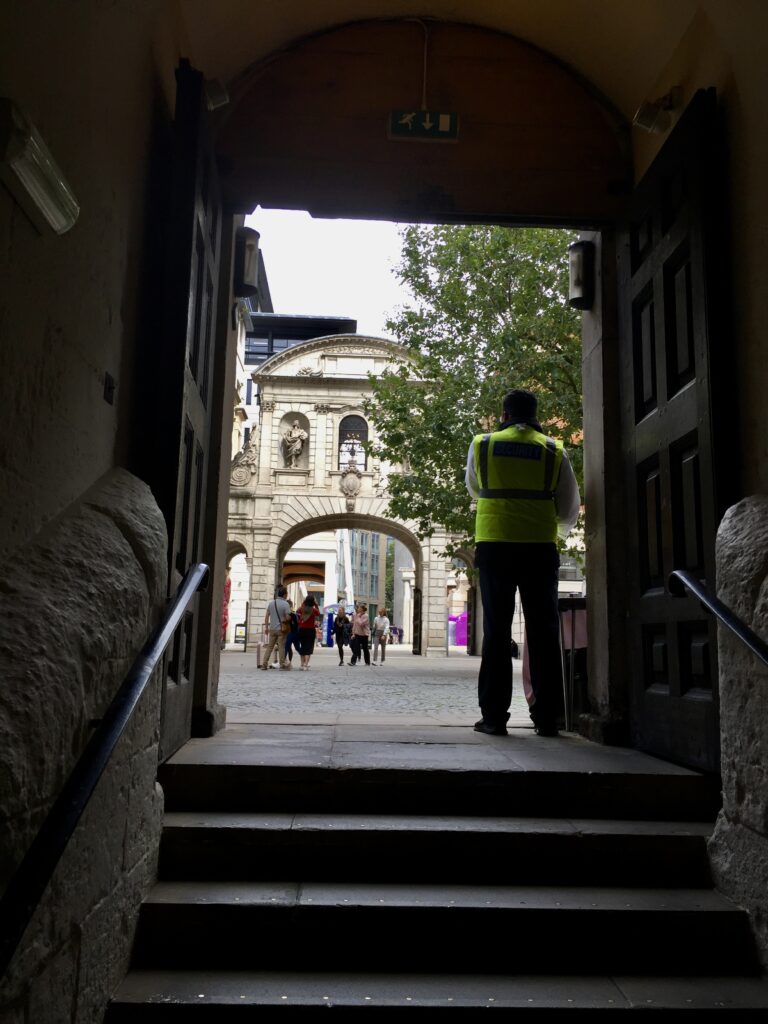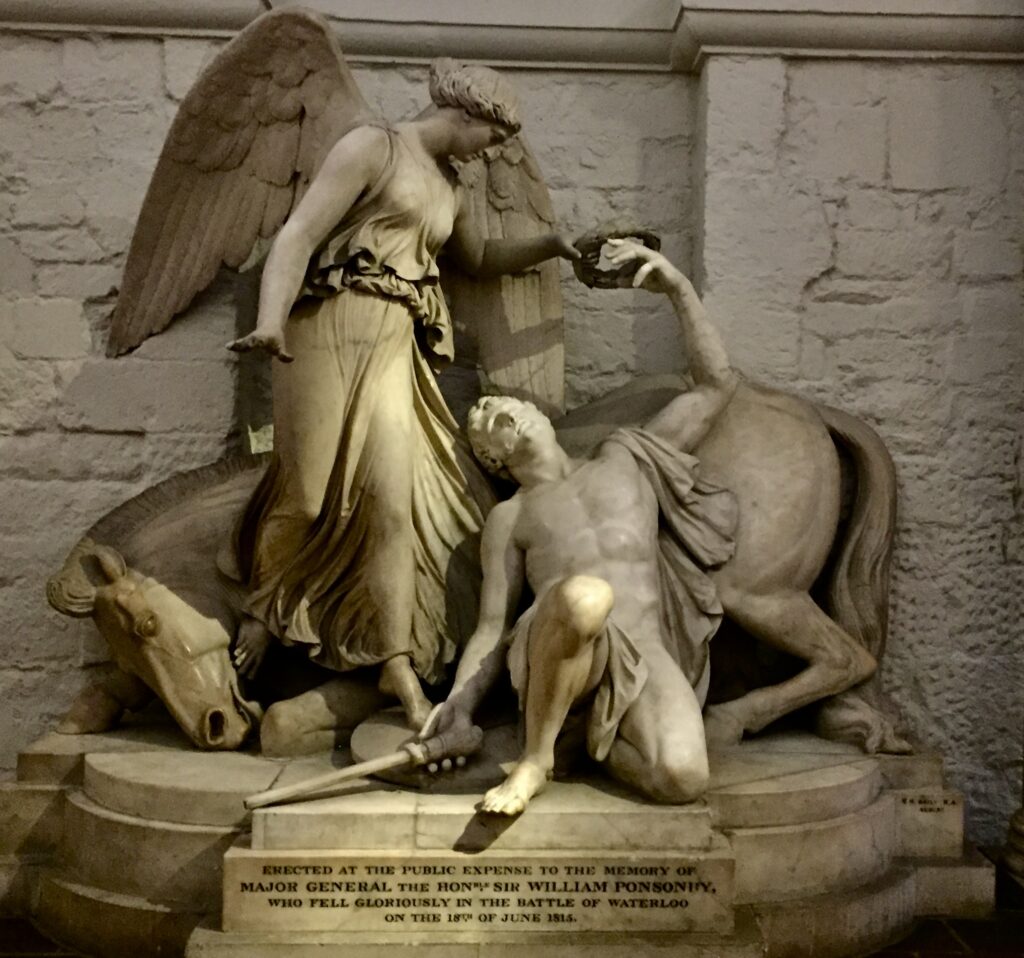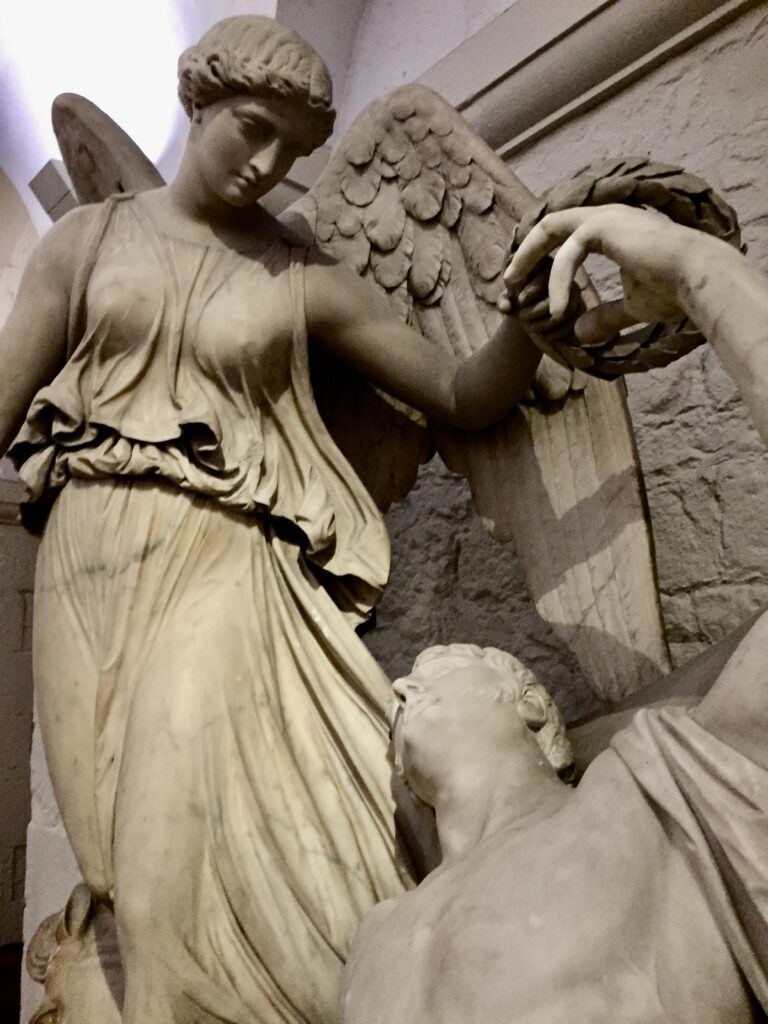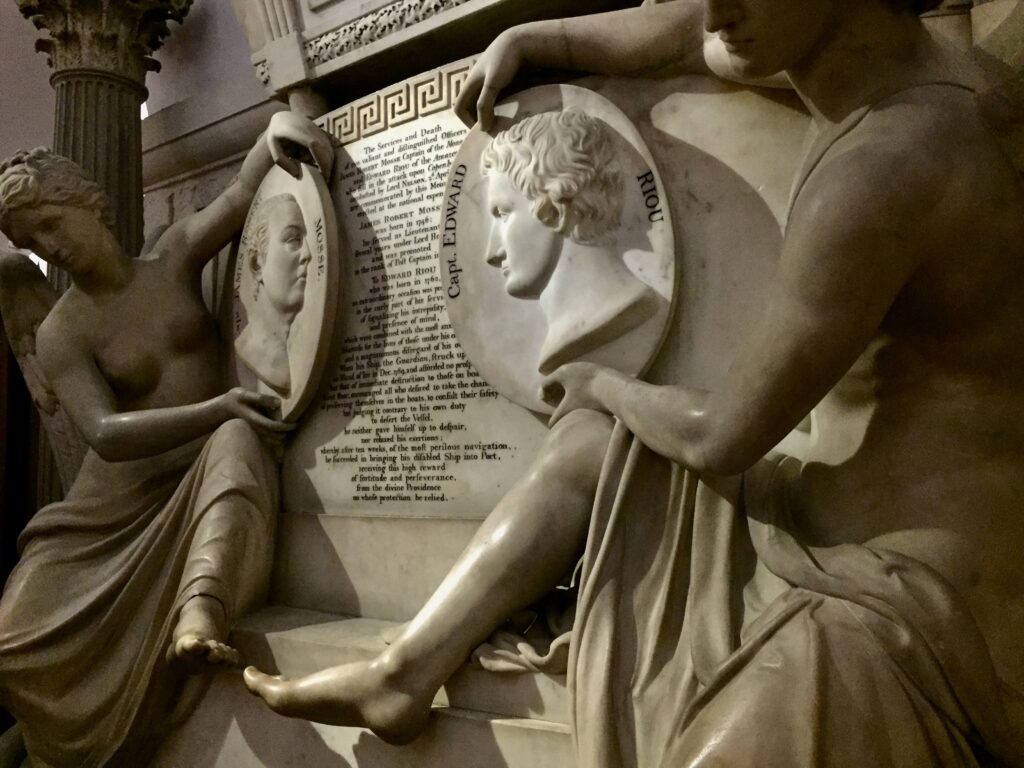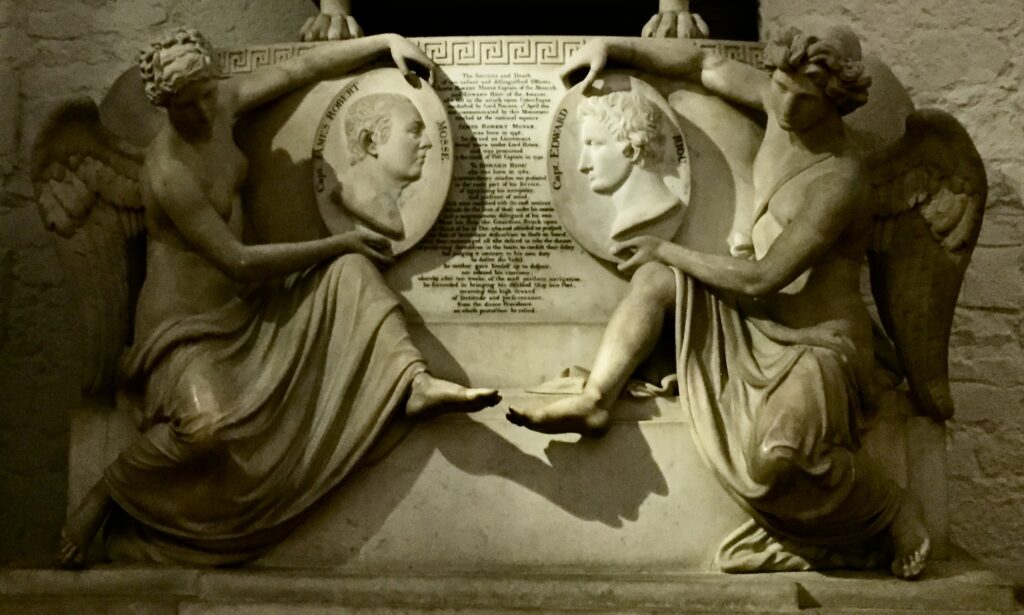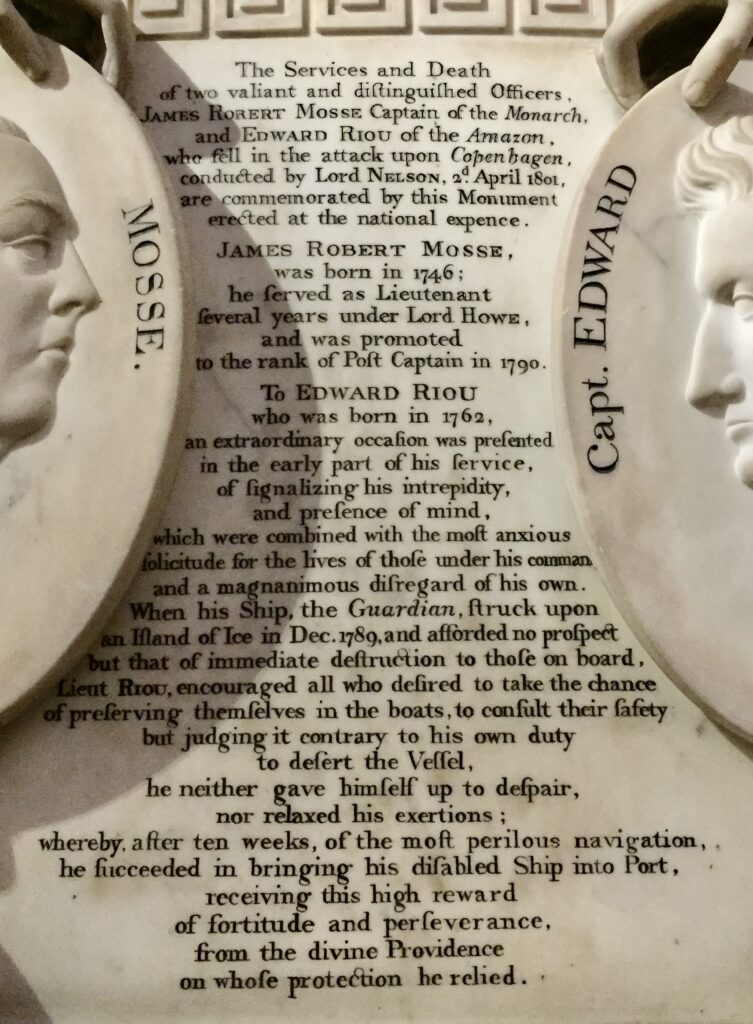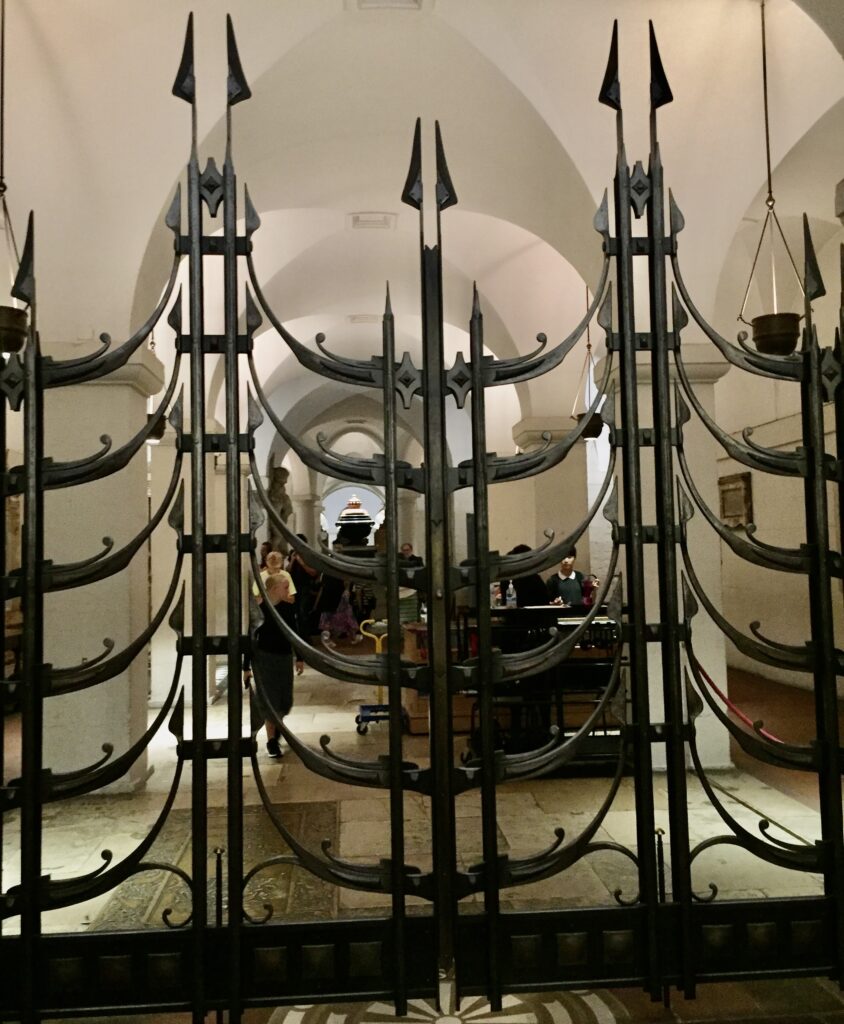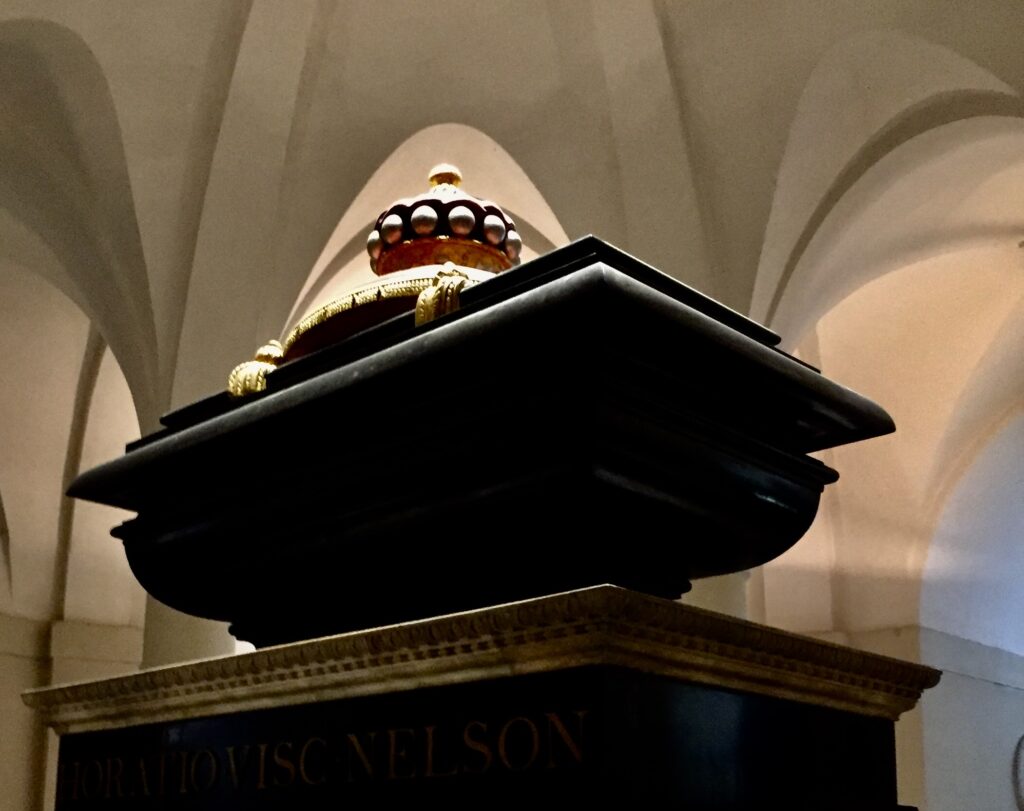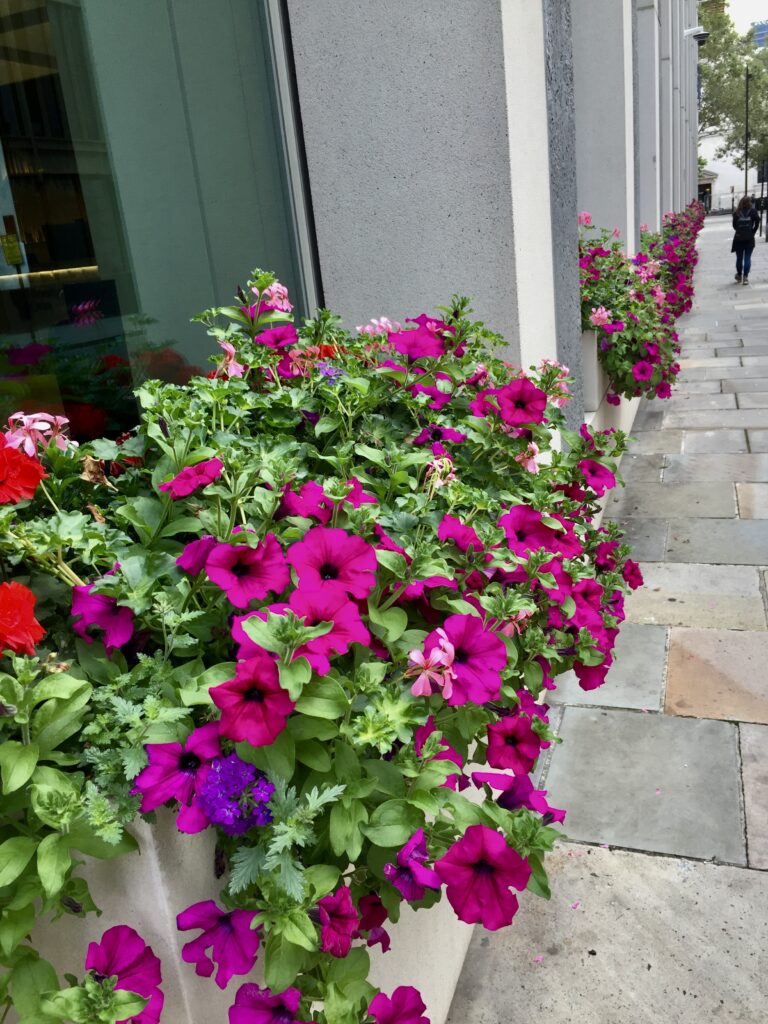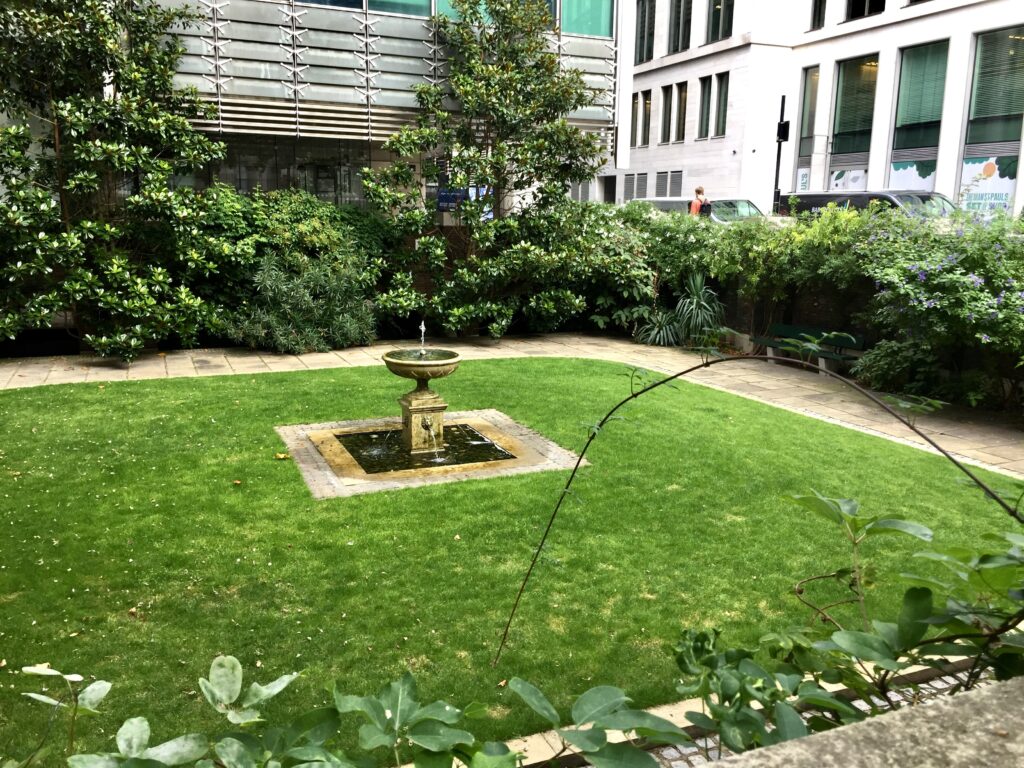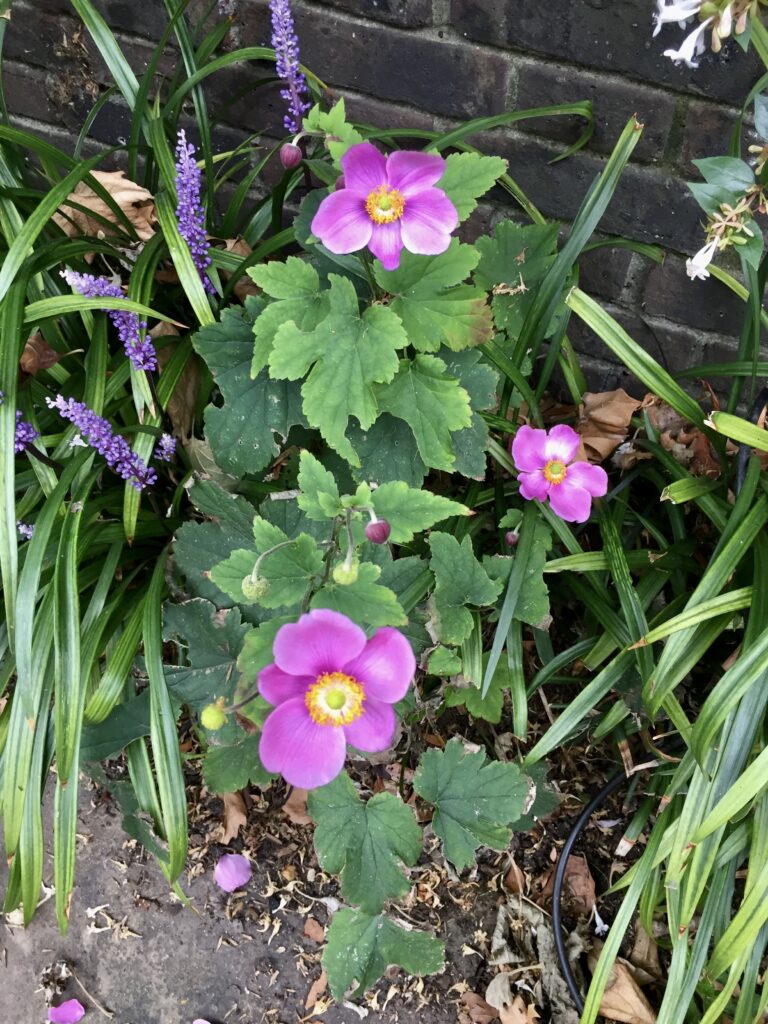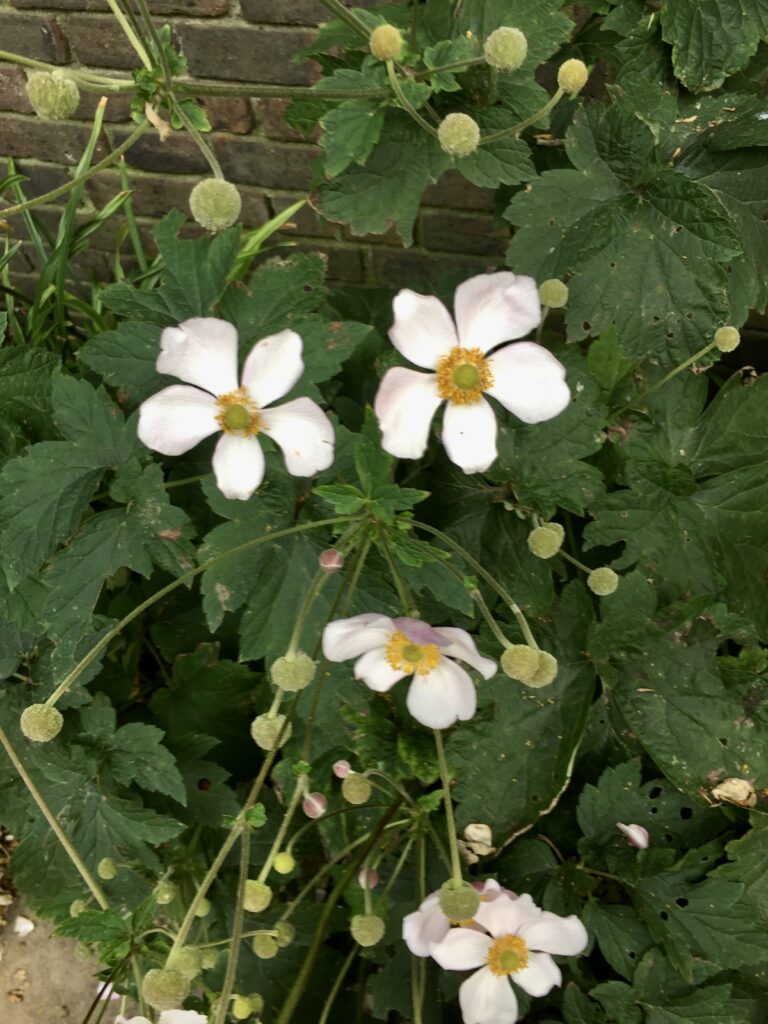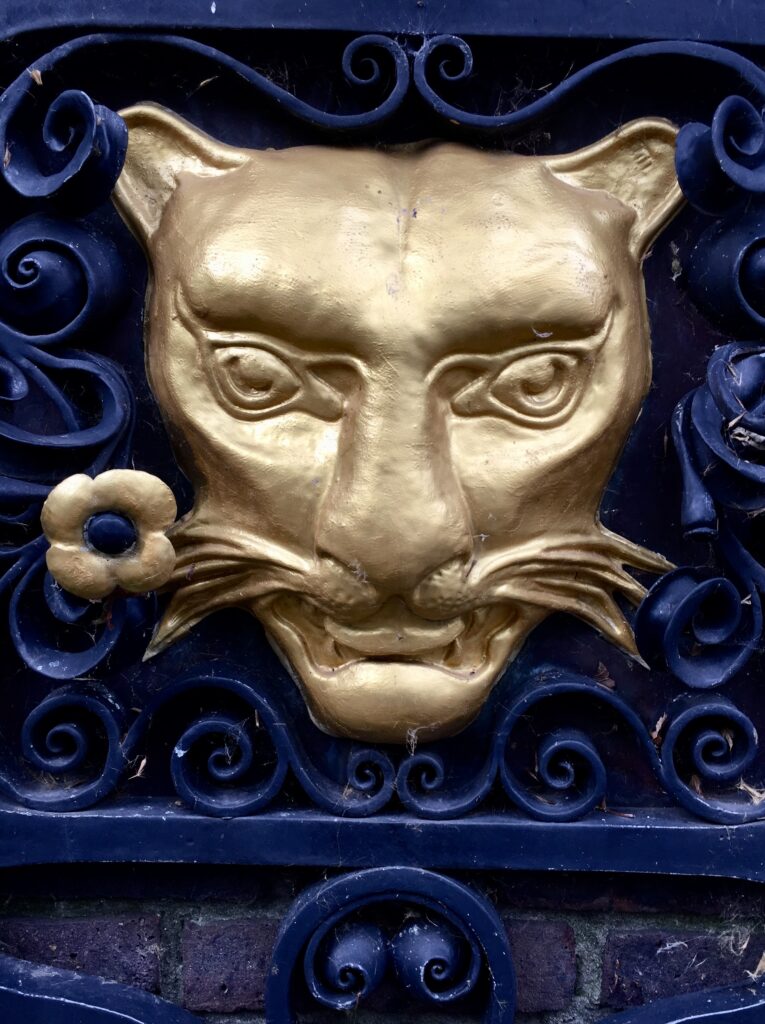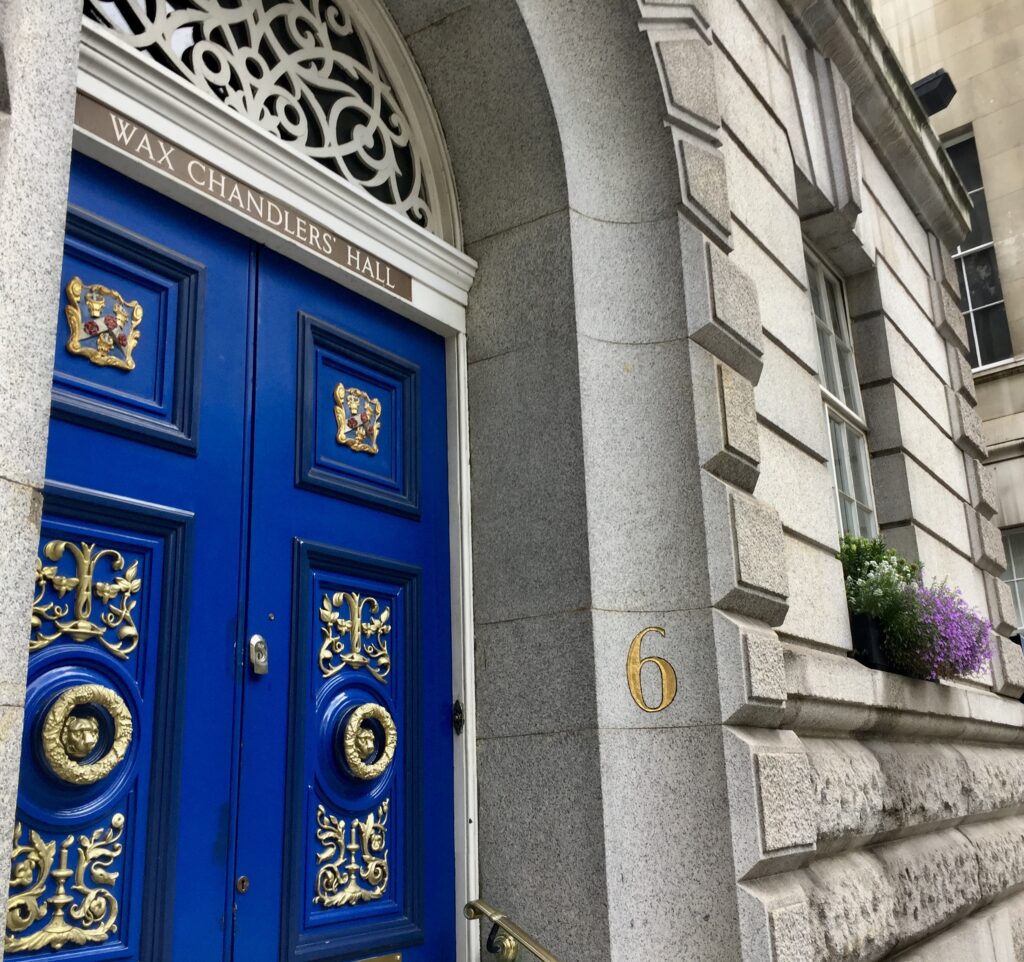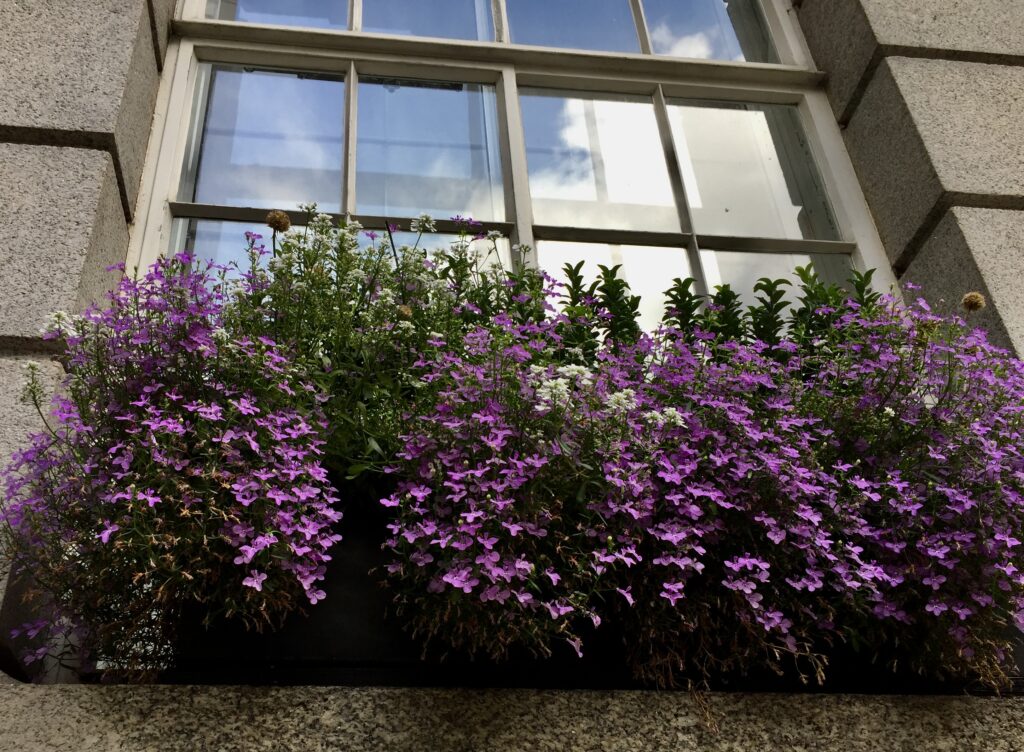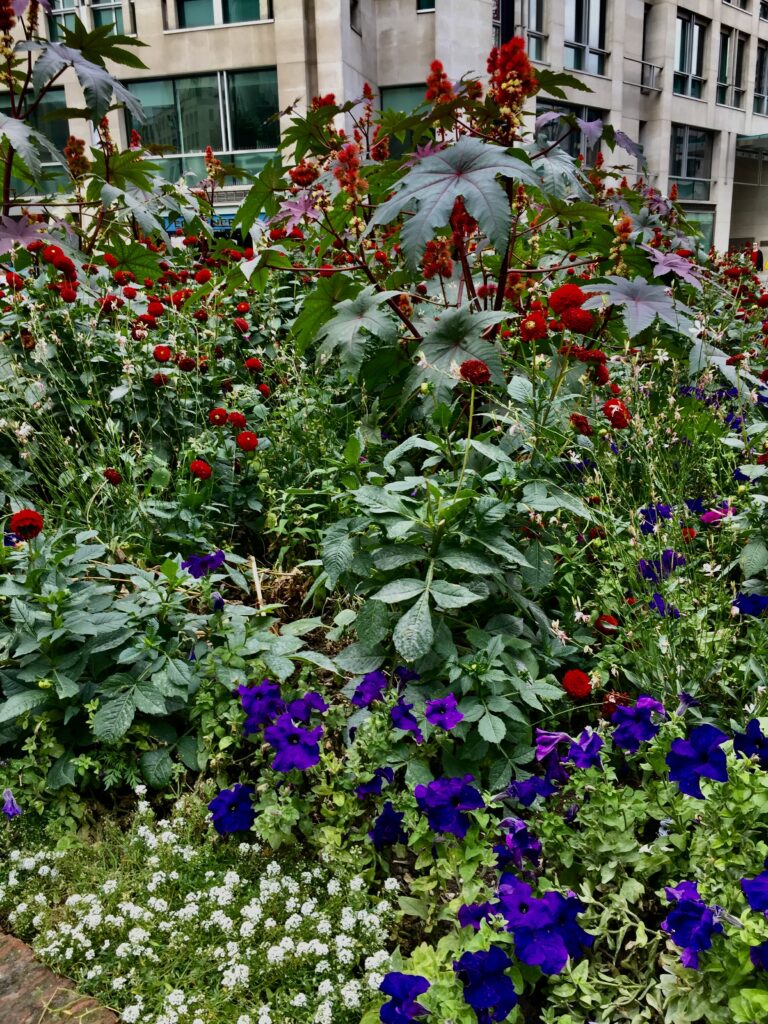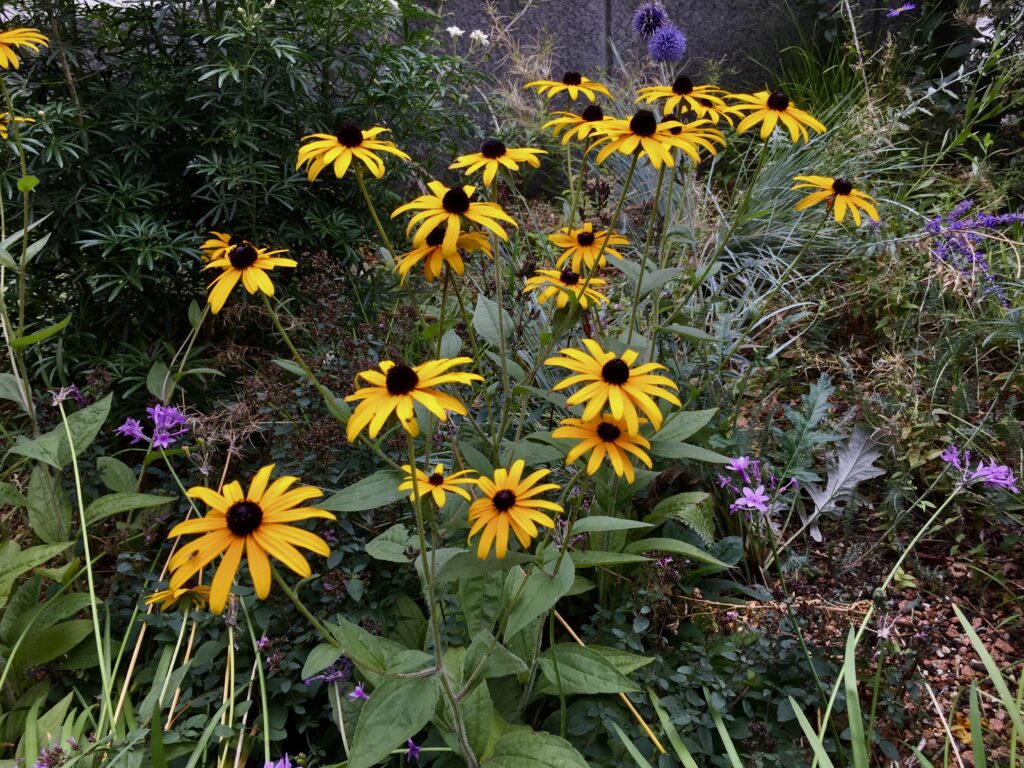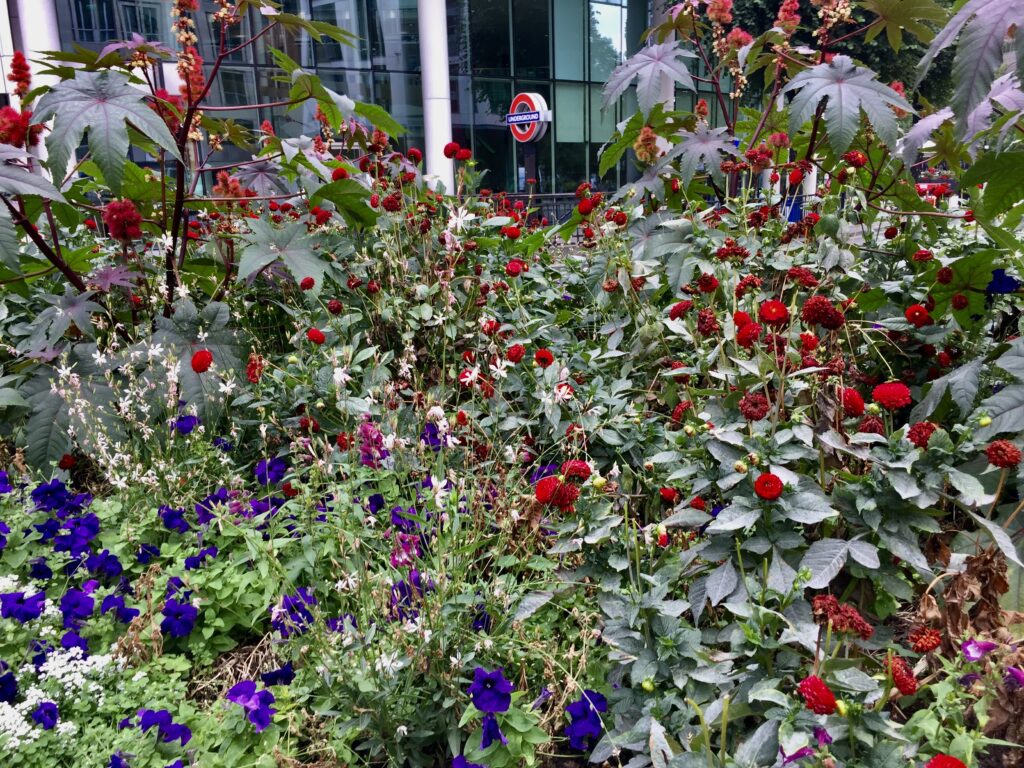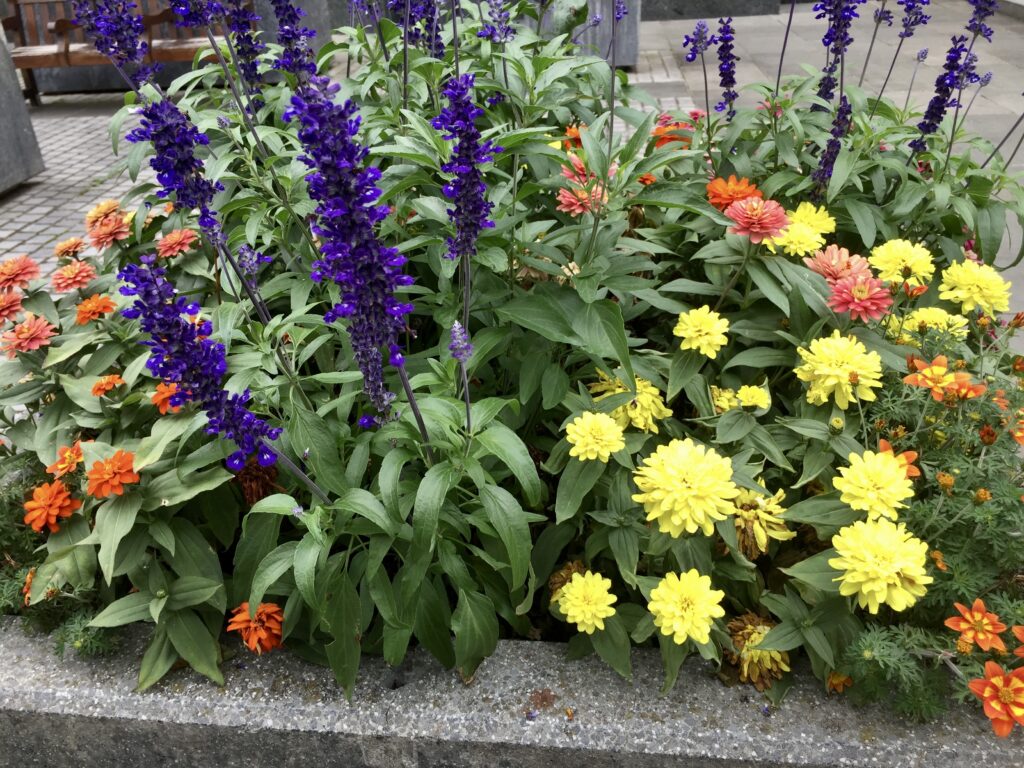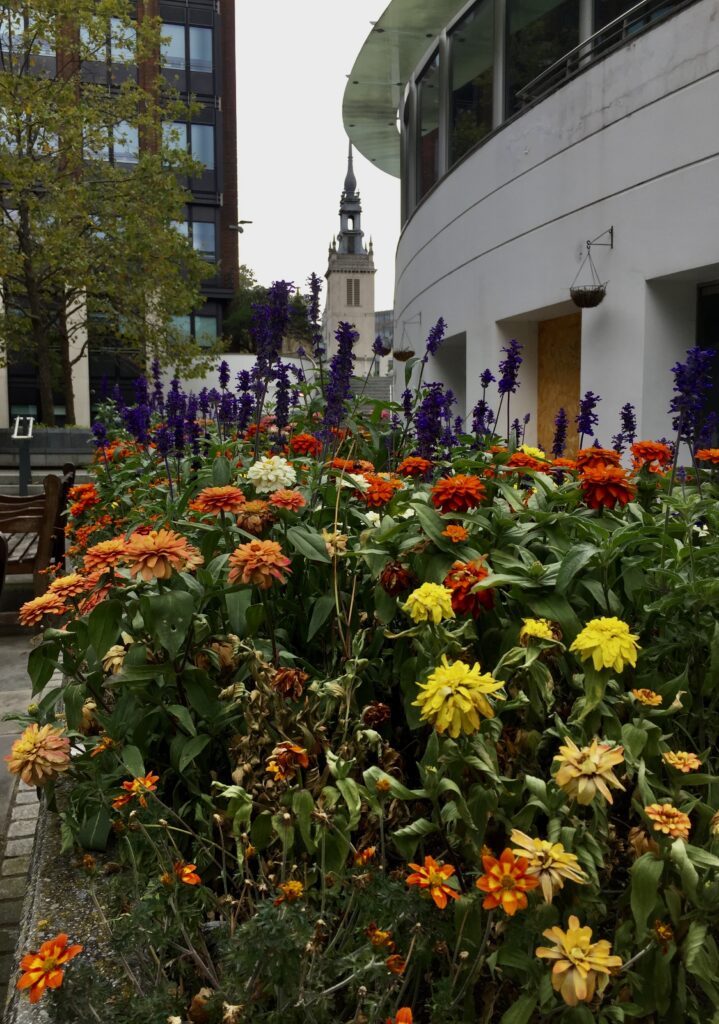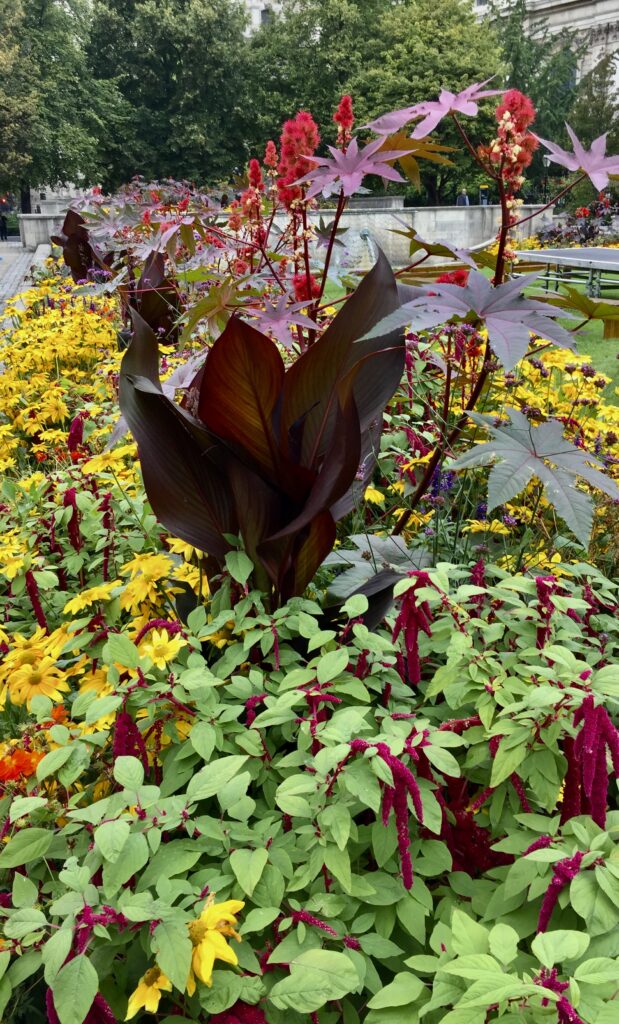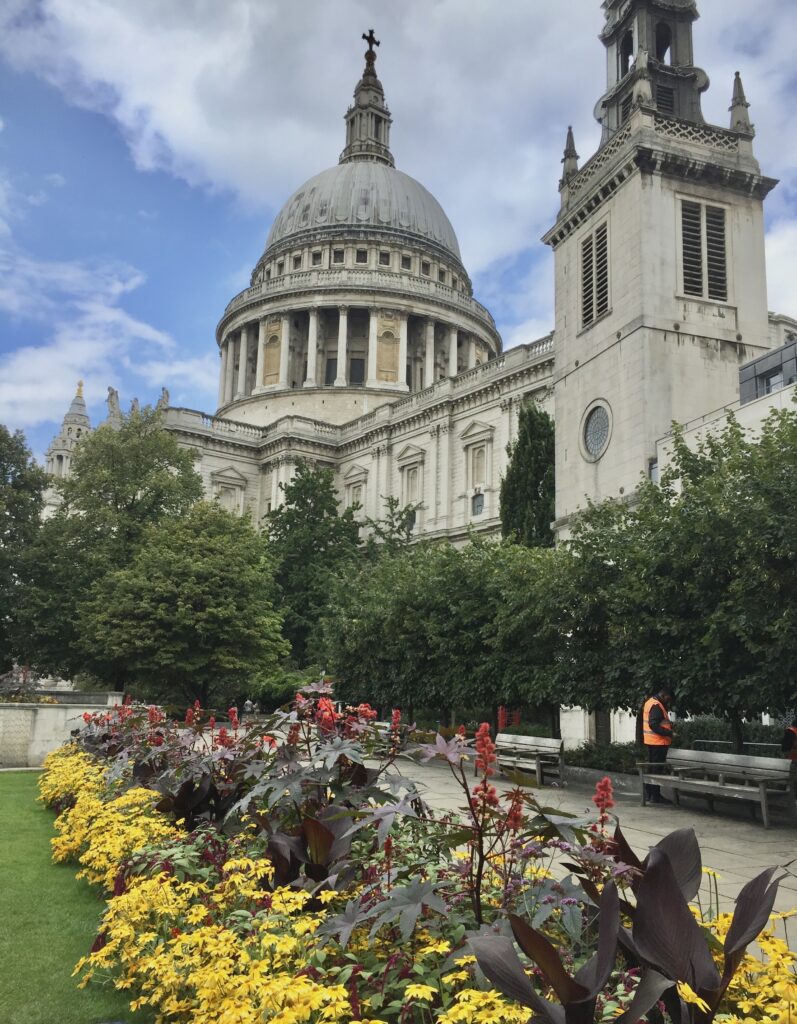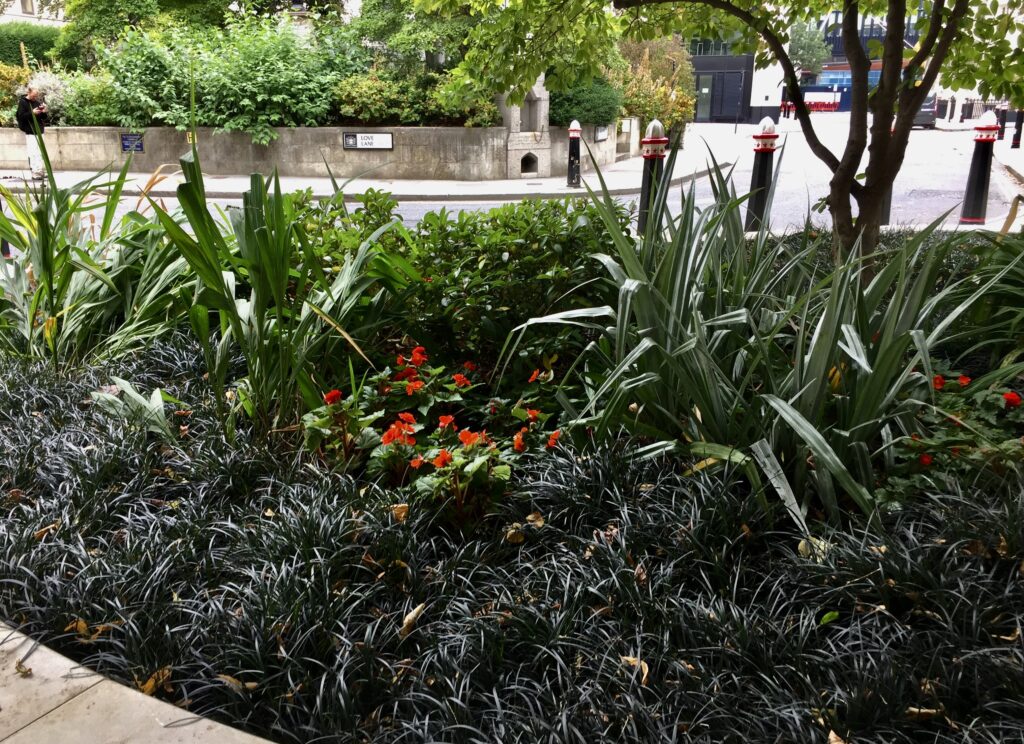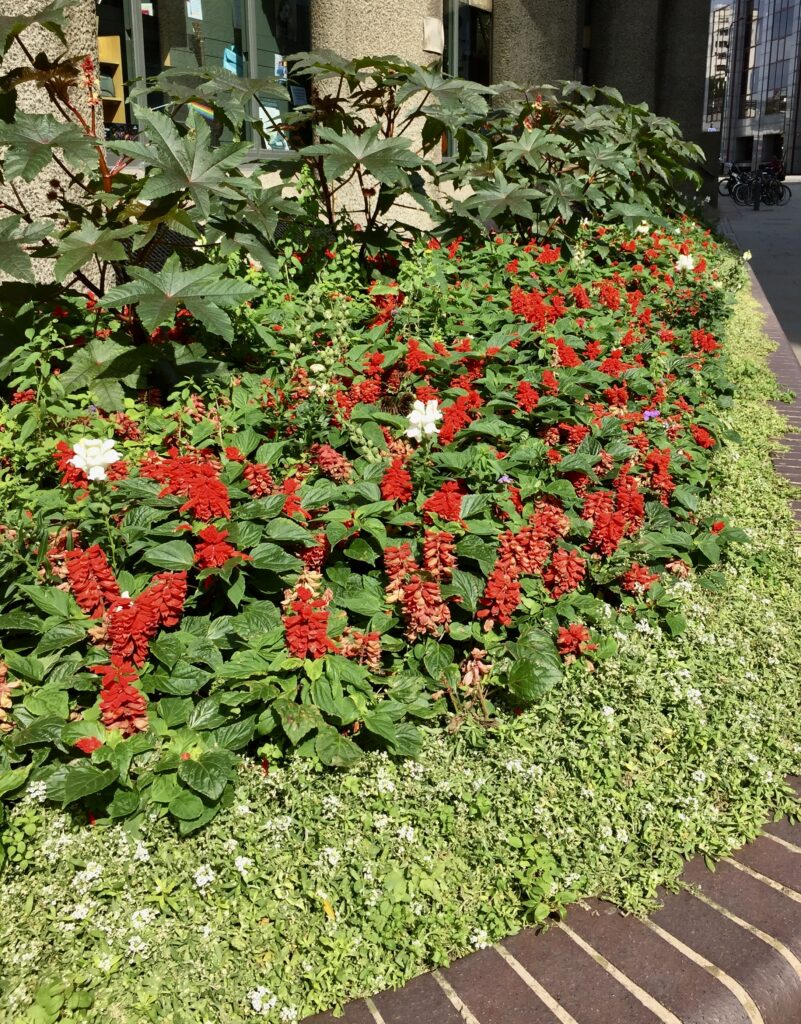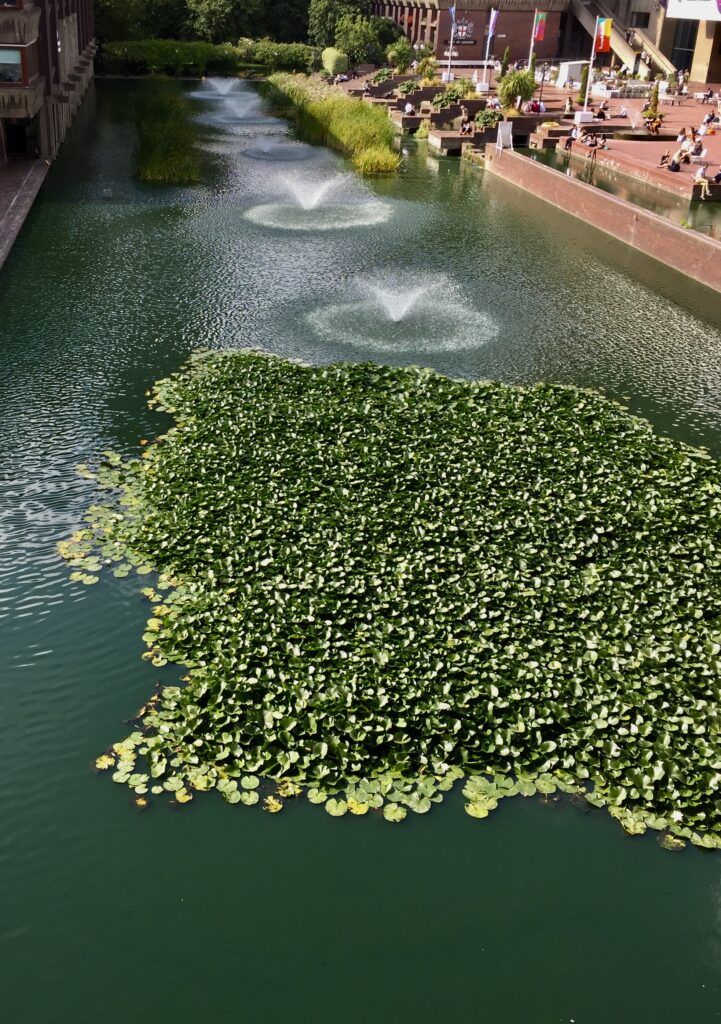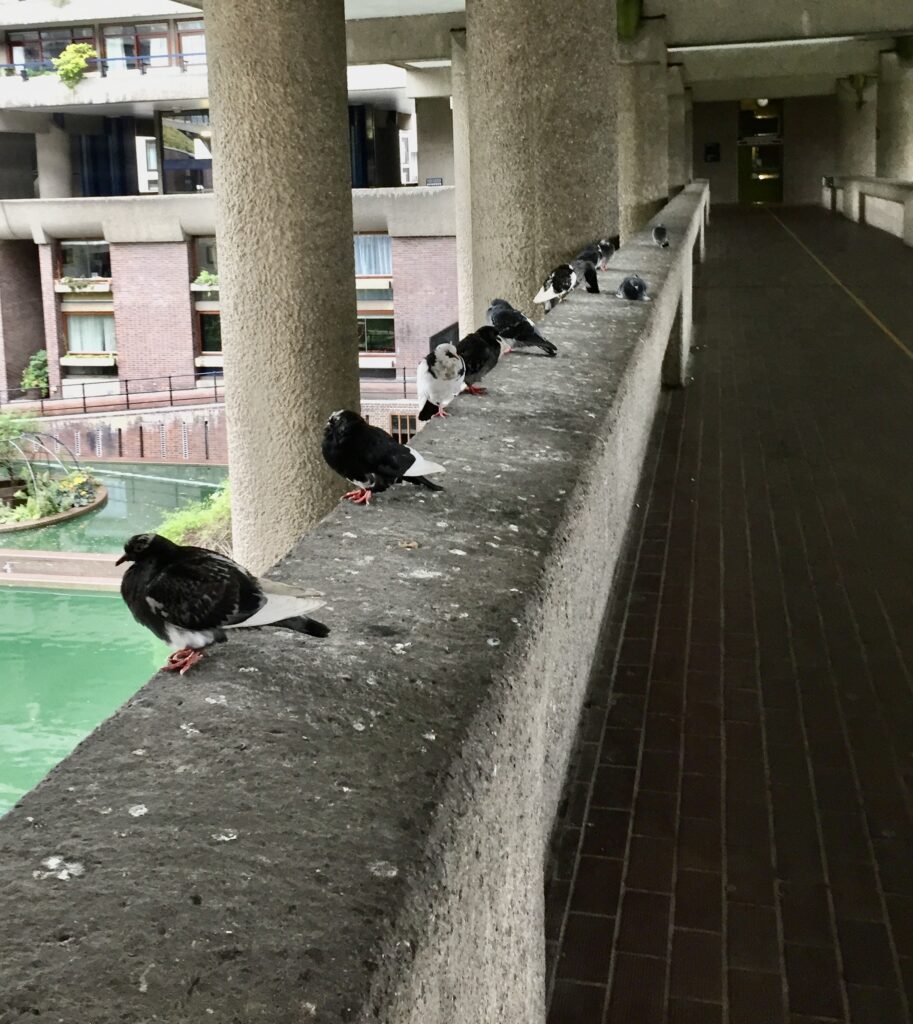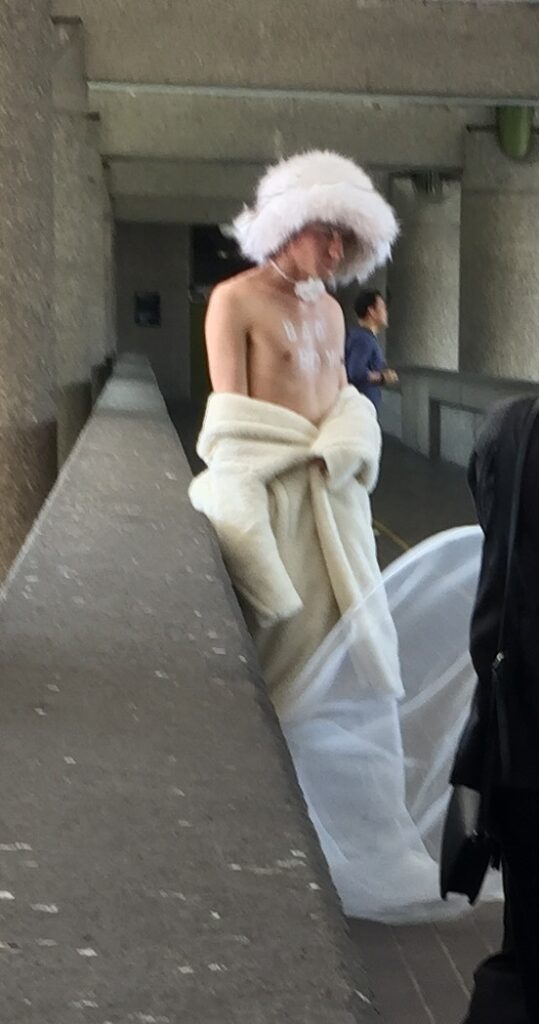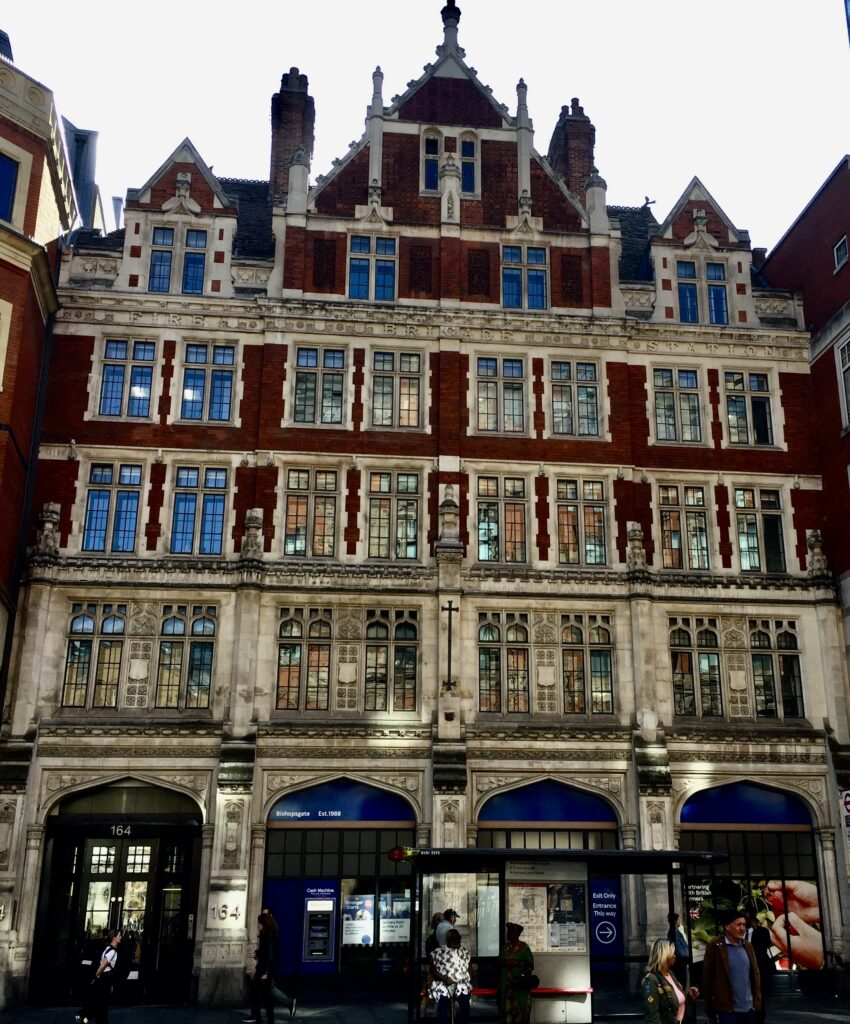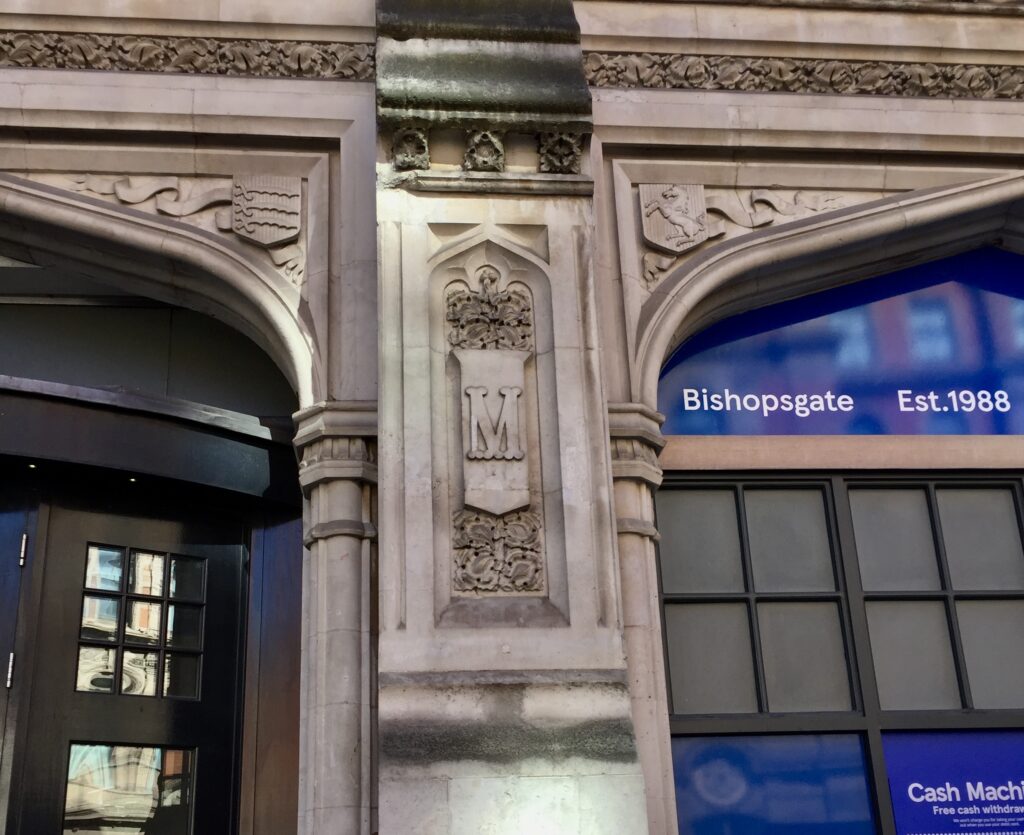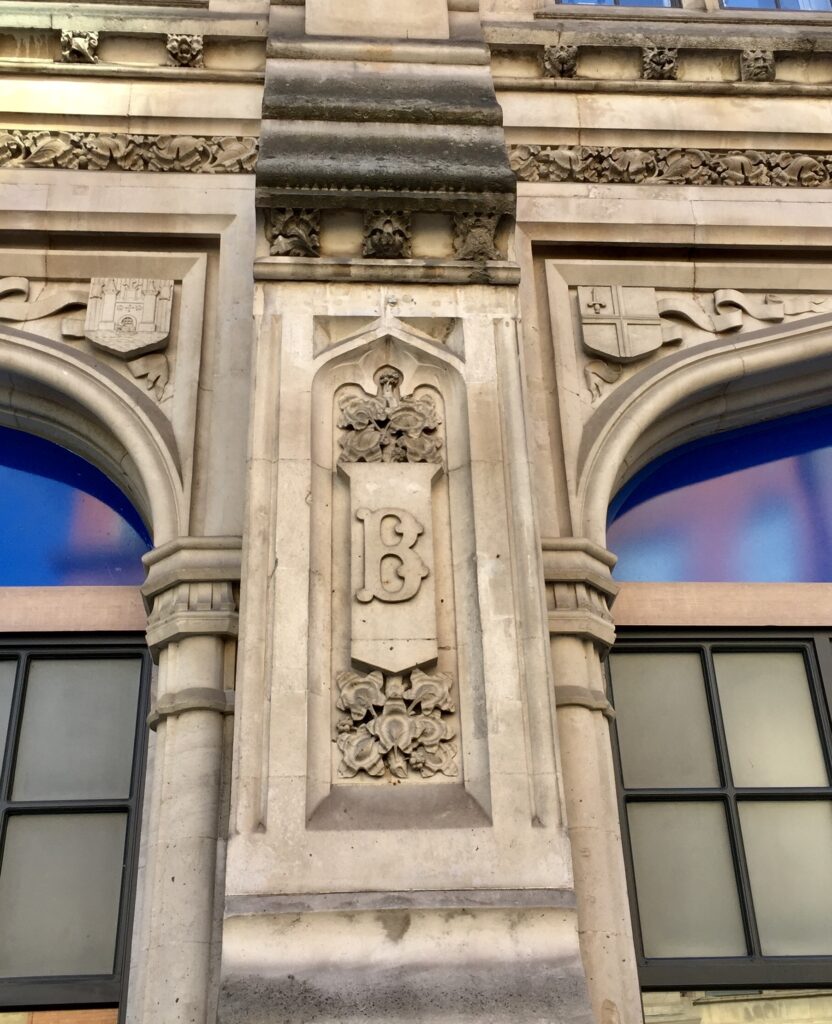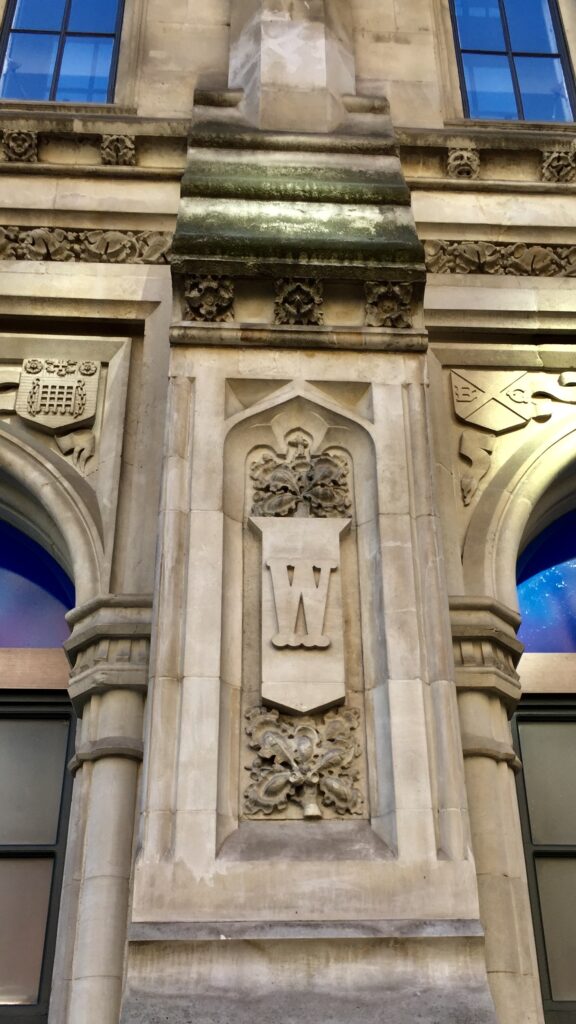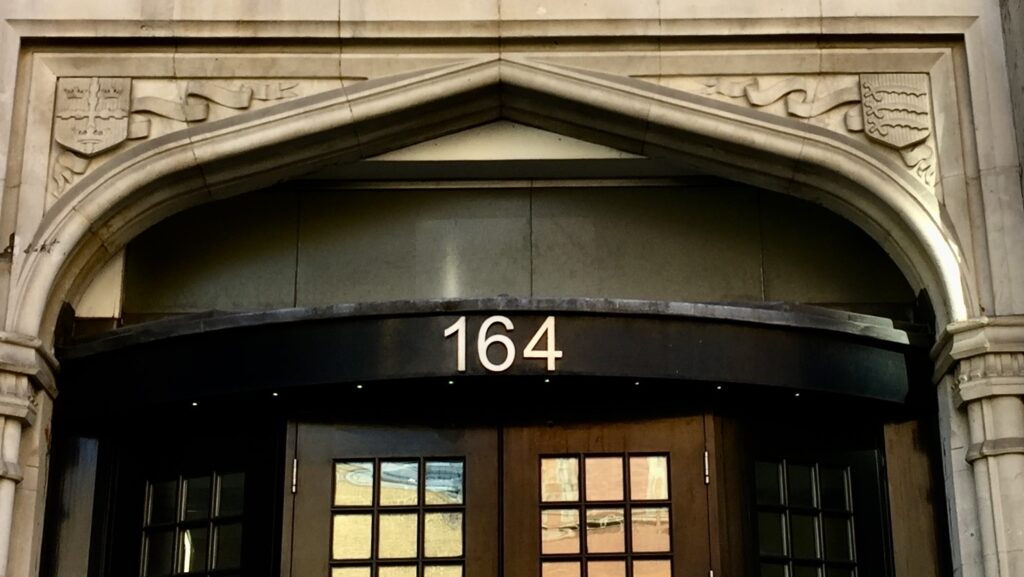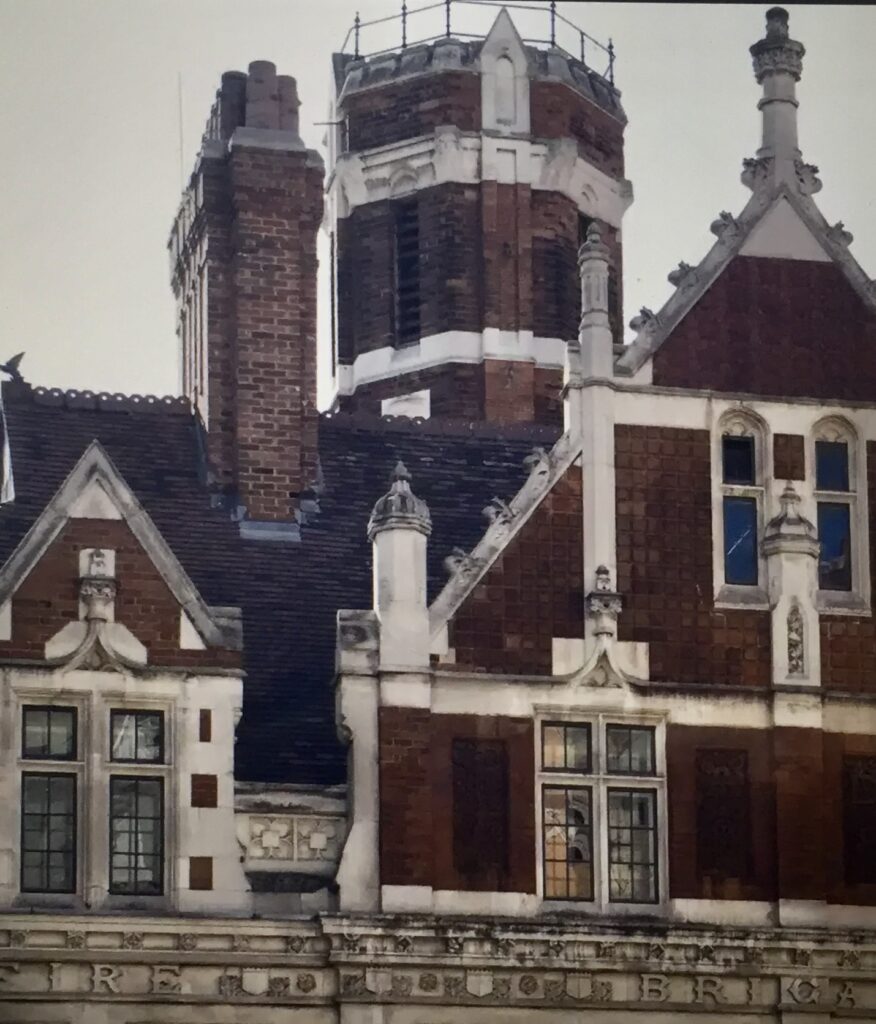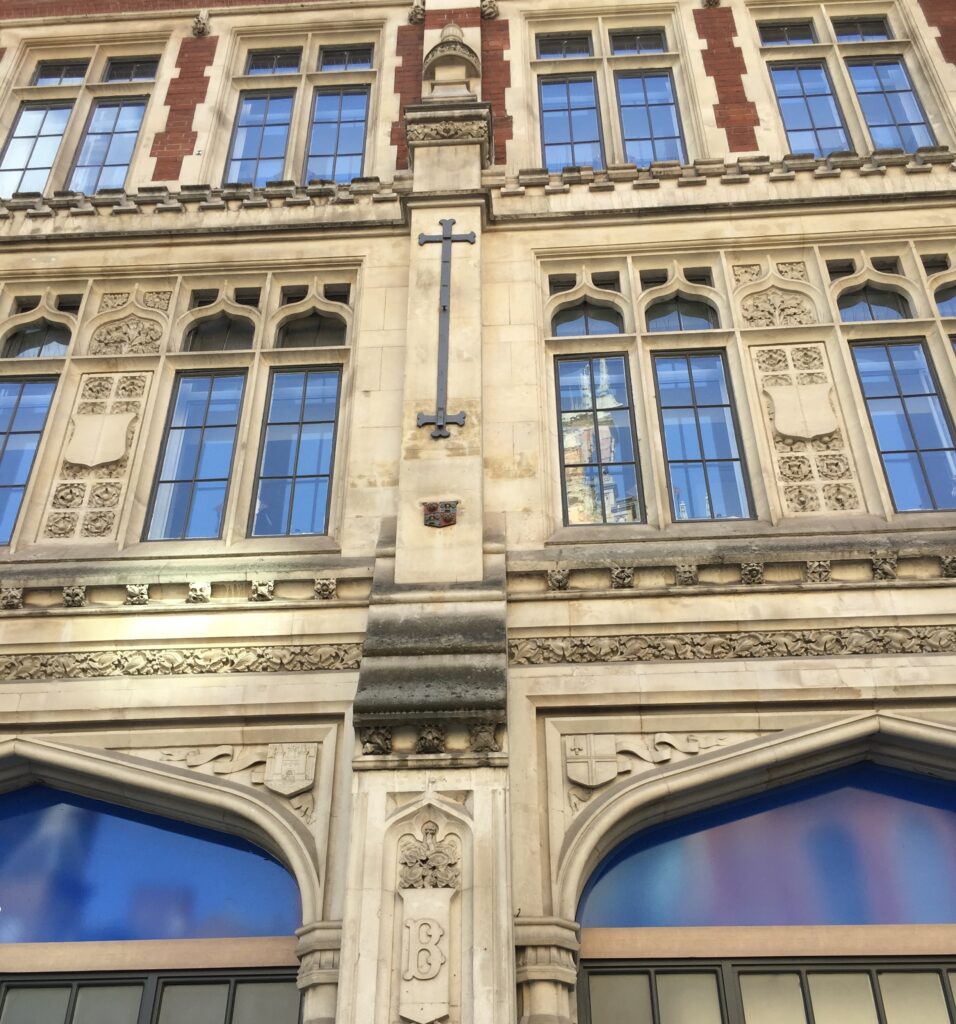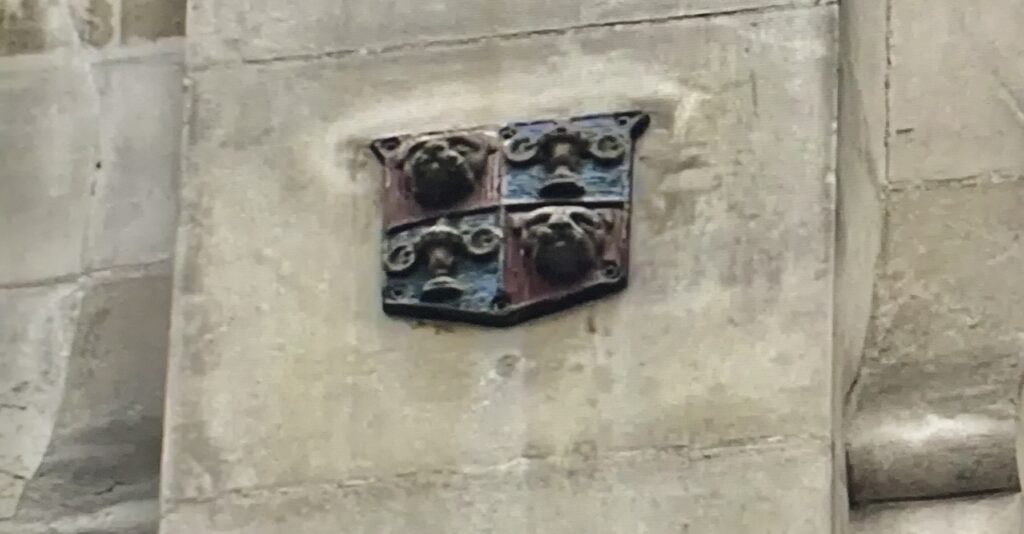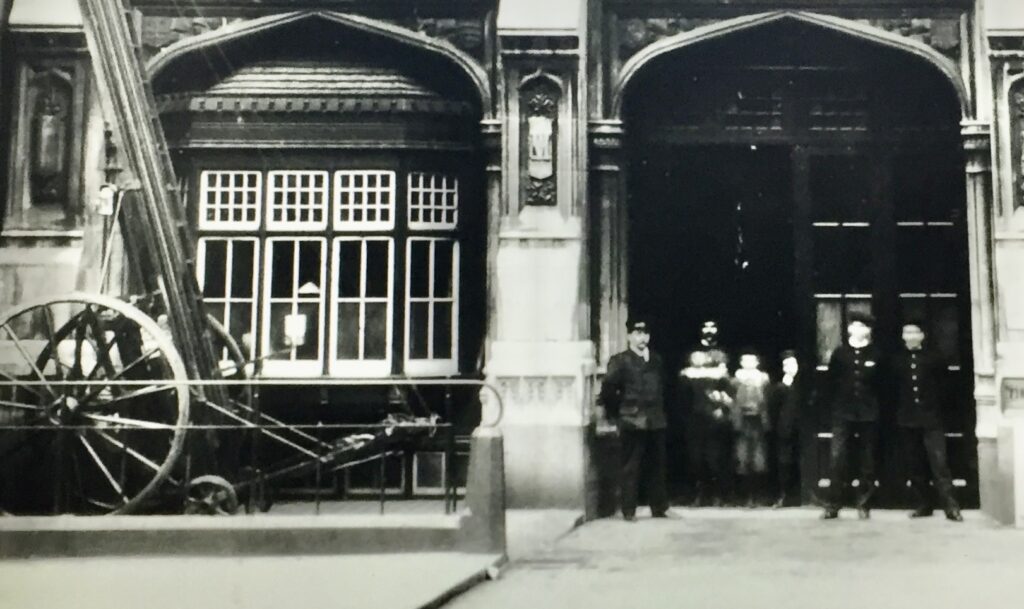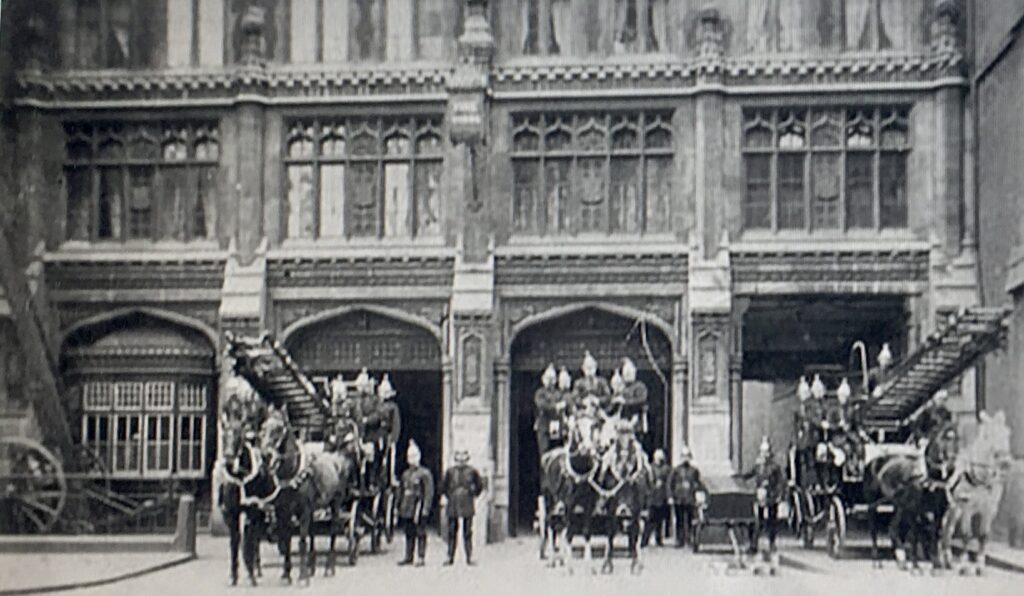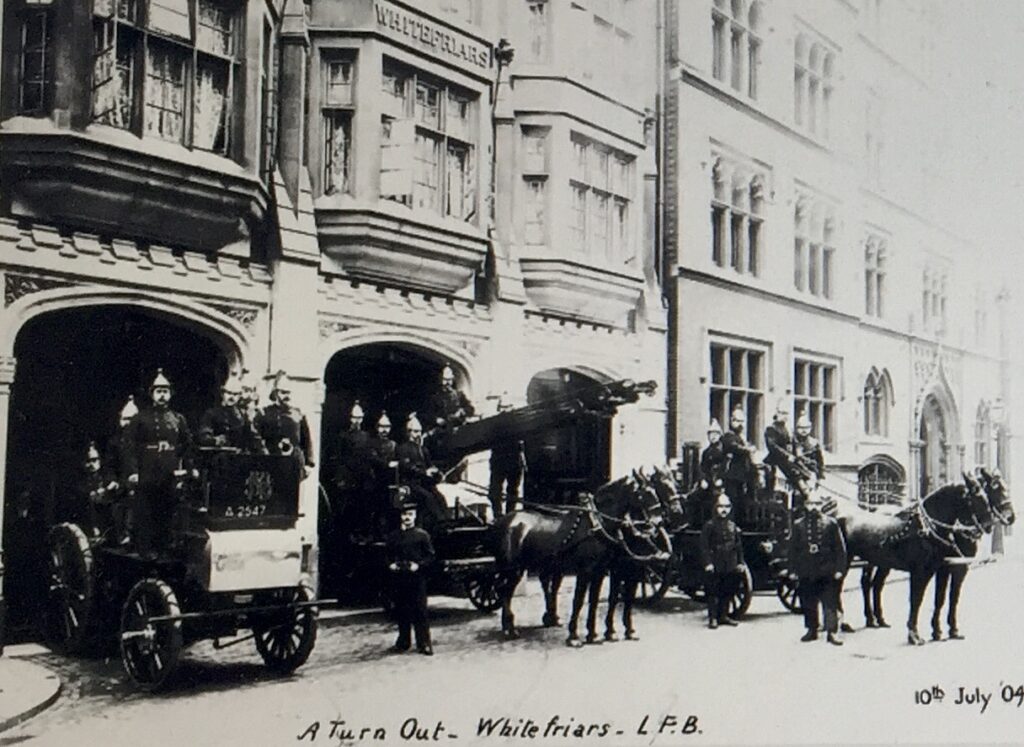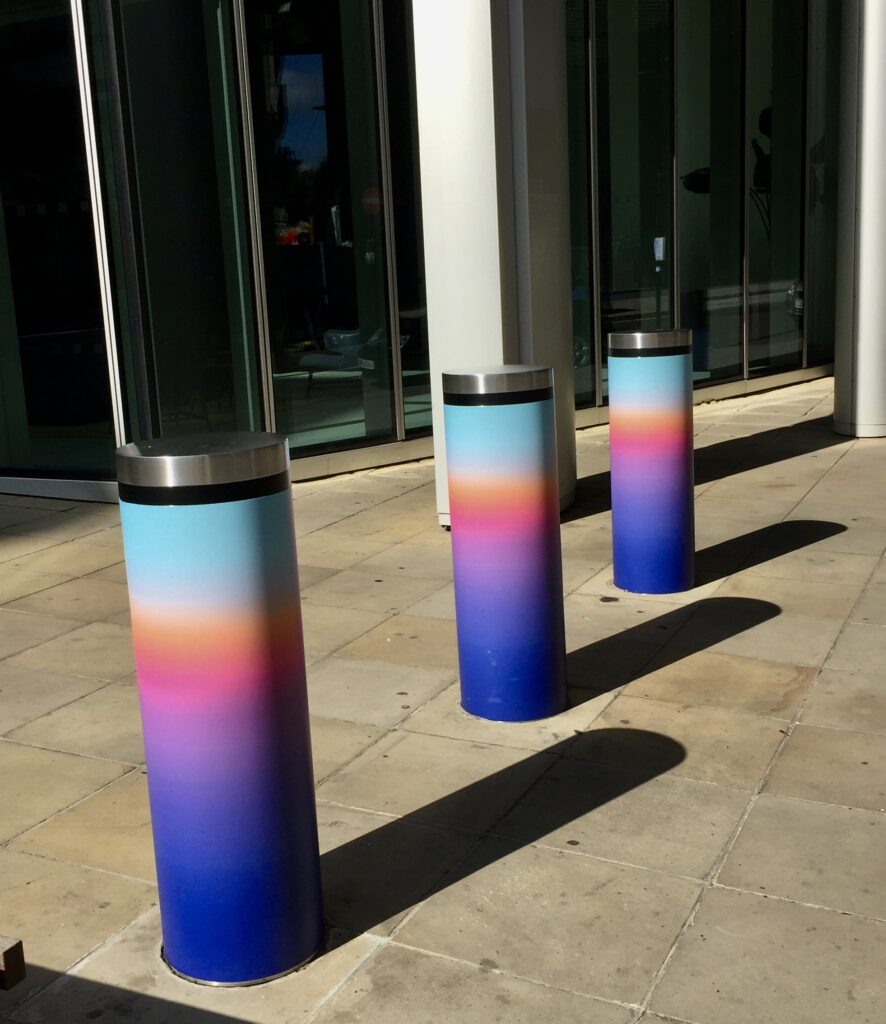I was so hot recently that I didn’t really want to wander far and today’s blog is the result. I hope you will find it interesting nonetheless.
I visited churchyards where, in some cases, the church they were associated with no longer exist.
First up is St Olave Silver Street, destroyed, the plaque tells us, in the ‘dreadfull fire in the year 1666‘ and never rebuilt …
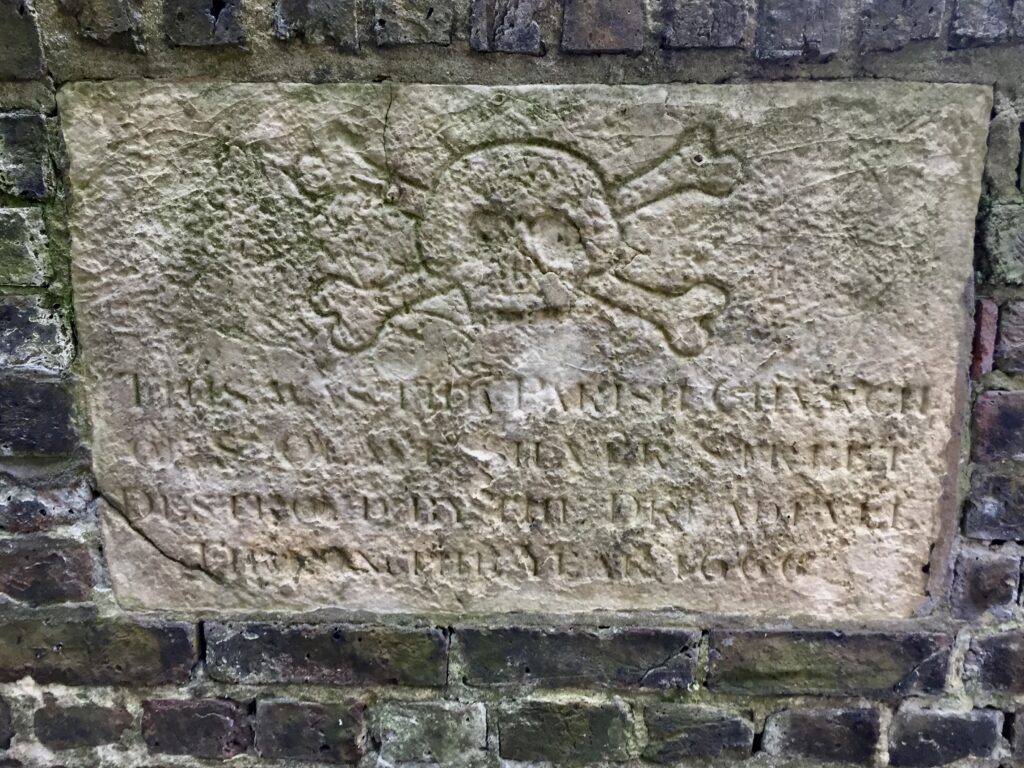
Another stone commemorates the churchyard being ‘thrown back’ due to road widening in 1865 …
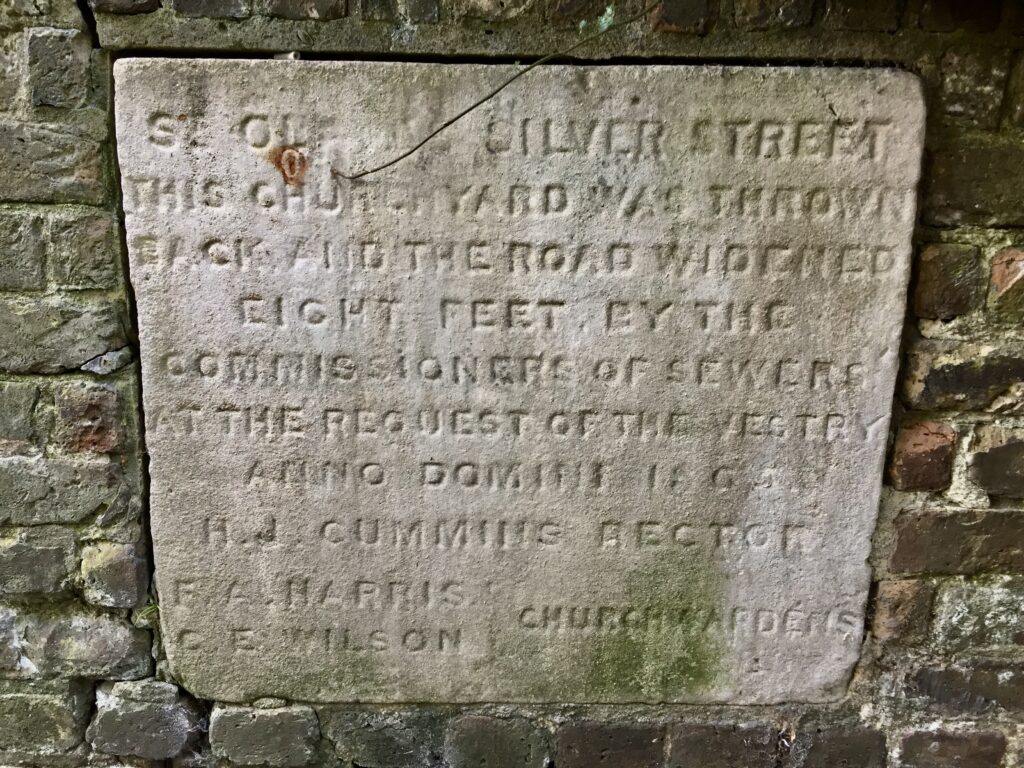
It’s a nice, modest little space – very green and lush at the moment …
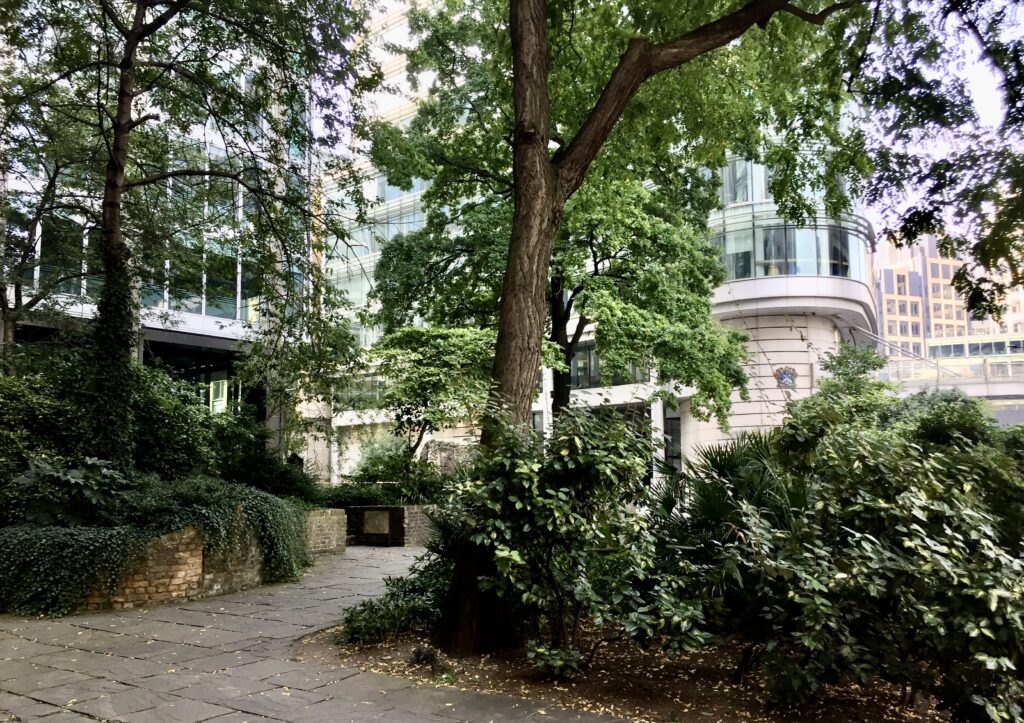
With a little font-like pool that I rather like …
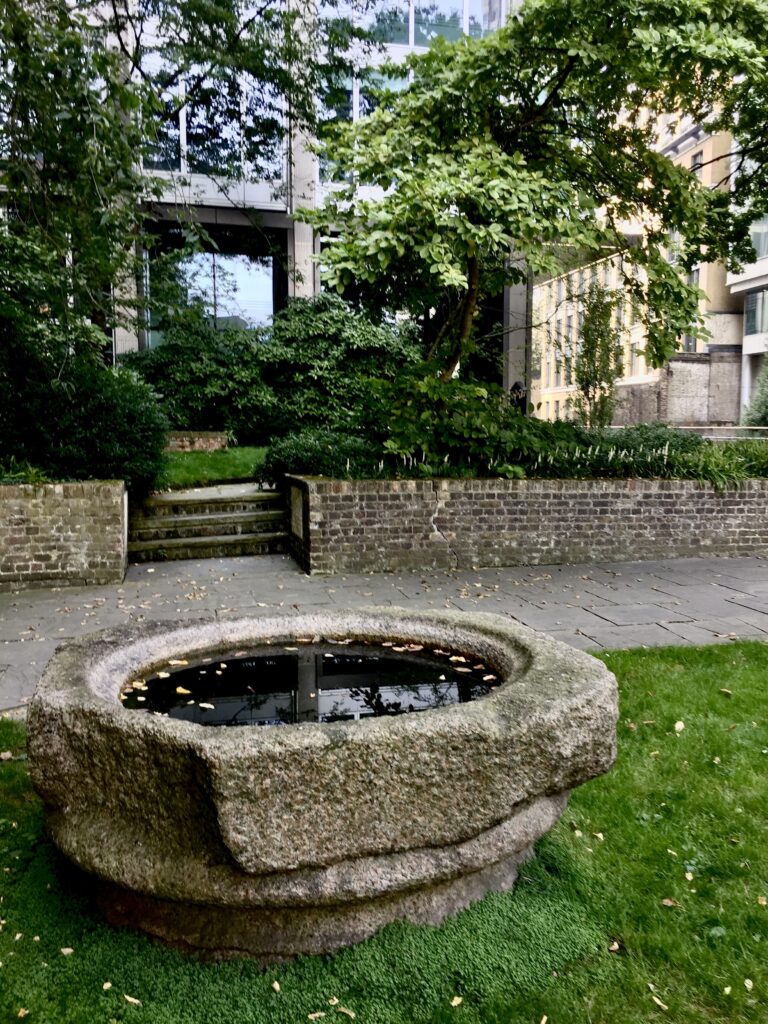
Interestingly, the church was notable as the place where the bodies of those dissected at the nearby Barber-Surgeons Hall would be buried. Prior to the Anatomy Act of 1832, only the bodies of those executed for murder could be used for dissection. The bodies would be used for anatomical study and then interred at St Olave’s.
Shakespeare once lived nearby but that building perished in the Great Fire as well …
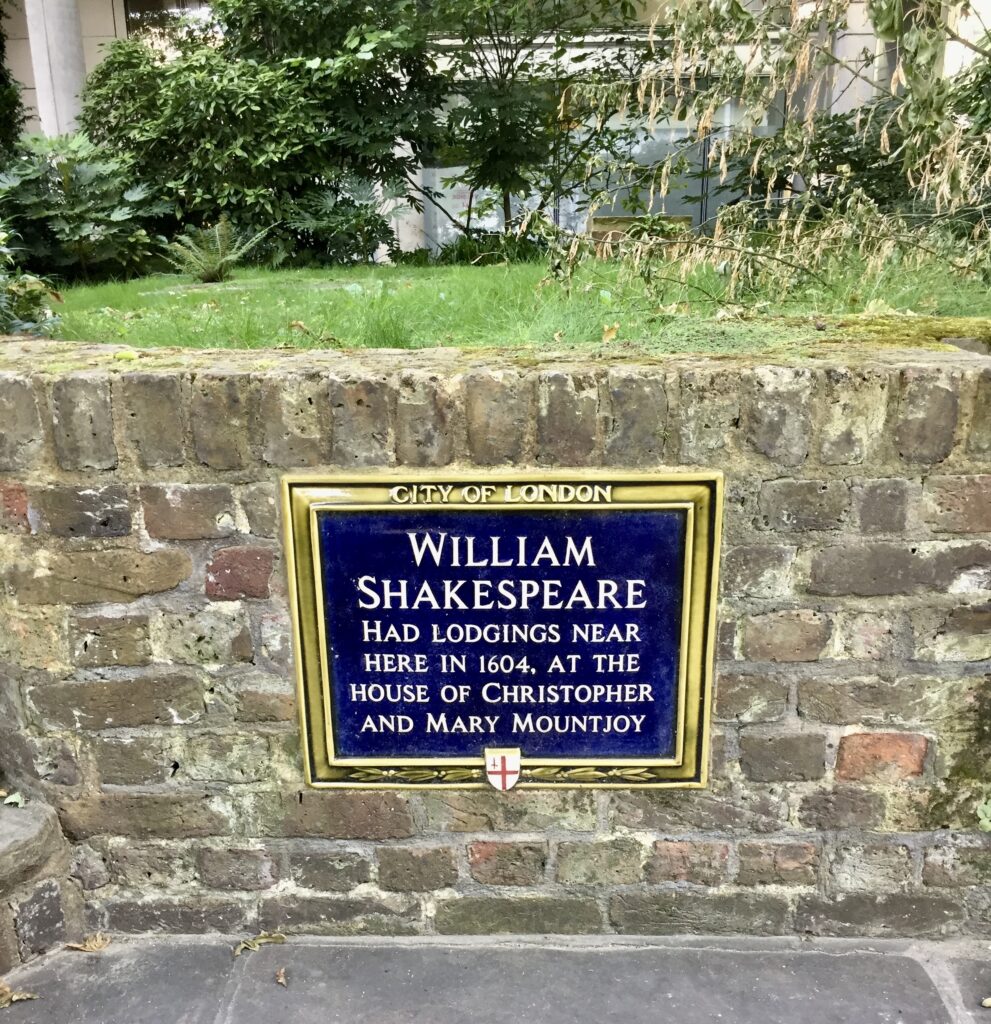
I have written about the churchyard of St John Zachary before, with its lovely little fountain …
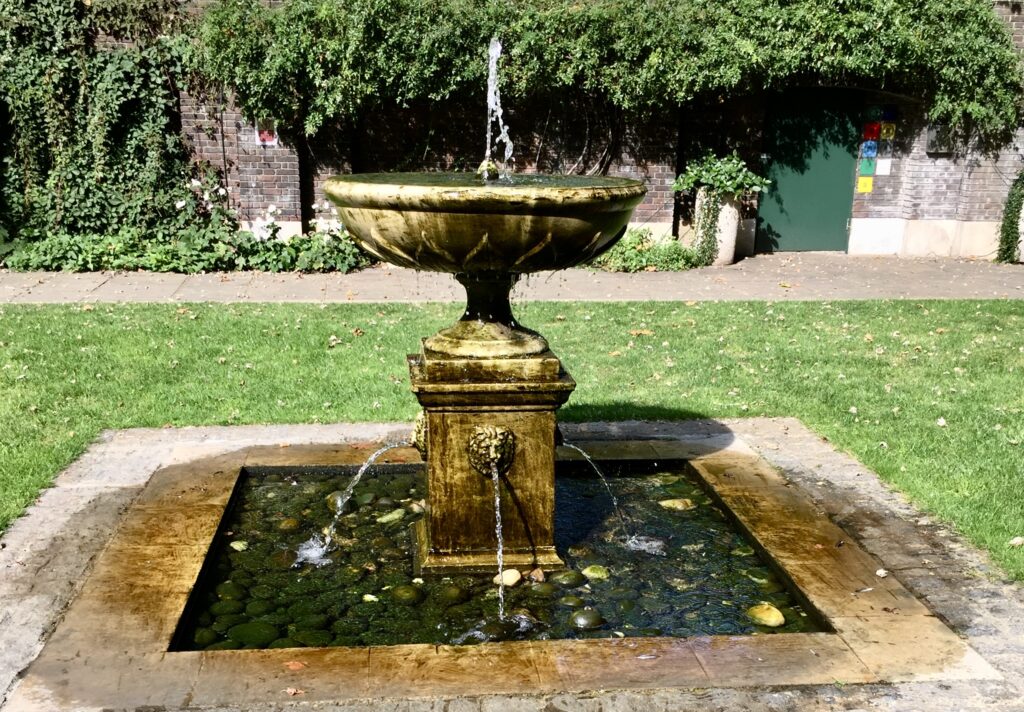
And Three Printers sculpture …
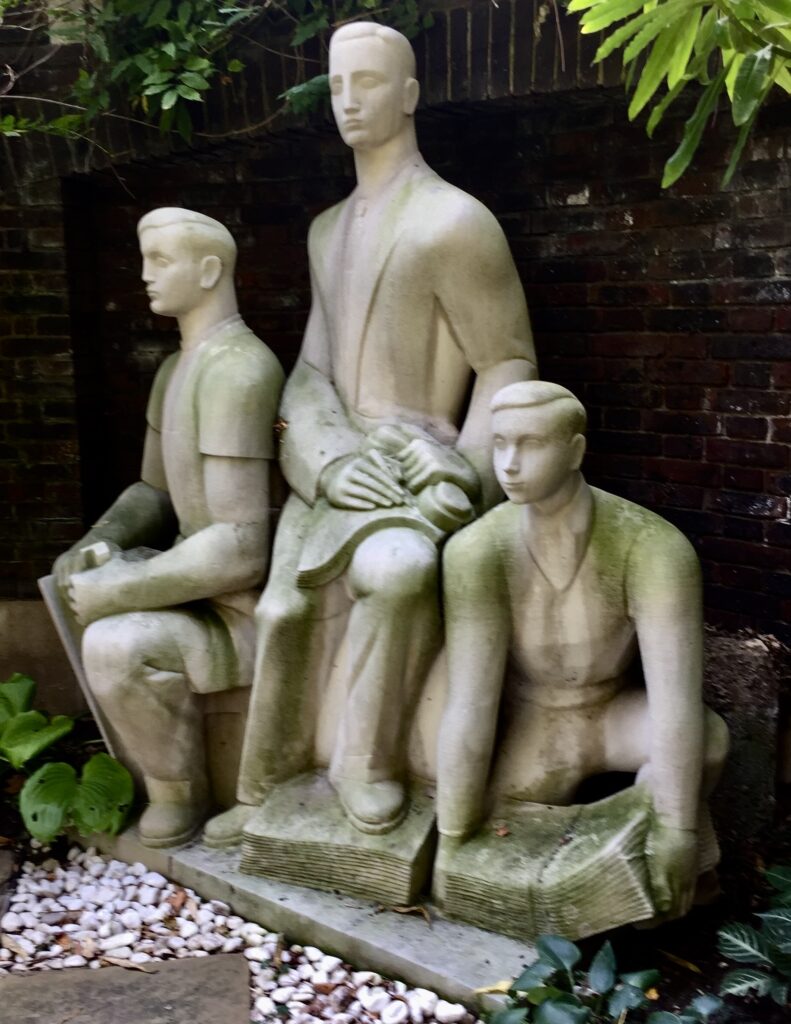
Wilfred Dudeney’s 1954 sculpture has been here since 2009. Commissioned by the Westminster Press Group, it represents the newspaper process with a newsboy (sales), printer and editor (or proprietor), and used to stand by their offices in New Street Square. When the square was redeveloped the Goldsmiths’ Company, as the freeholders of the square, relocated the sculpture here (they had to rescue it from a demolition yard). Look closely, the printer is grasping a ‘stick’ for holding metal type, and Dudeney’s name is in ‘mirror writing’ just as it would have been when typeset the old-fashioned way …
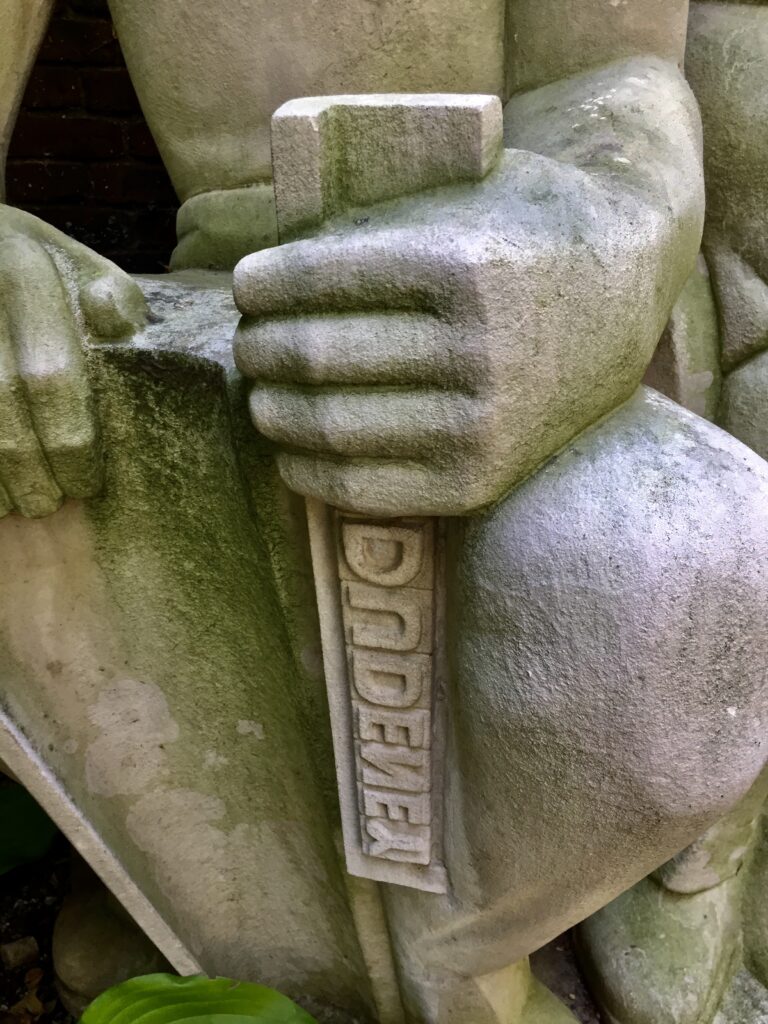
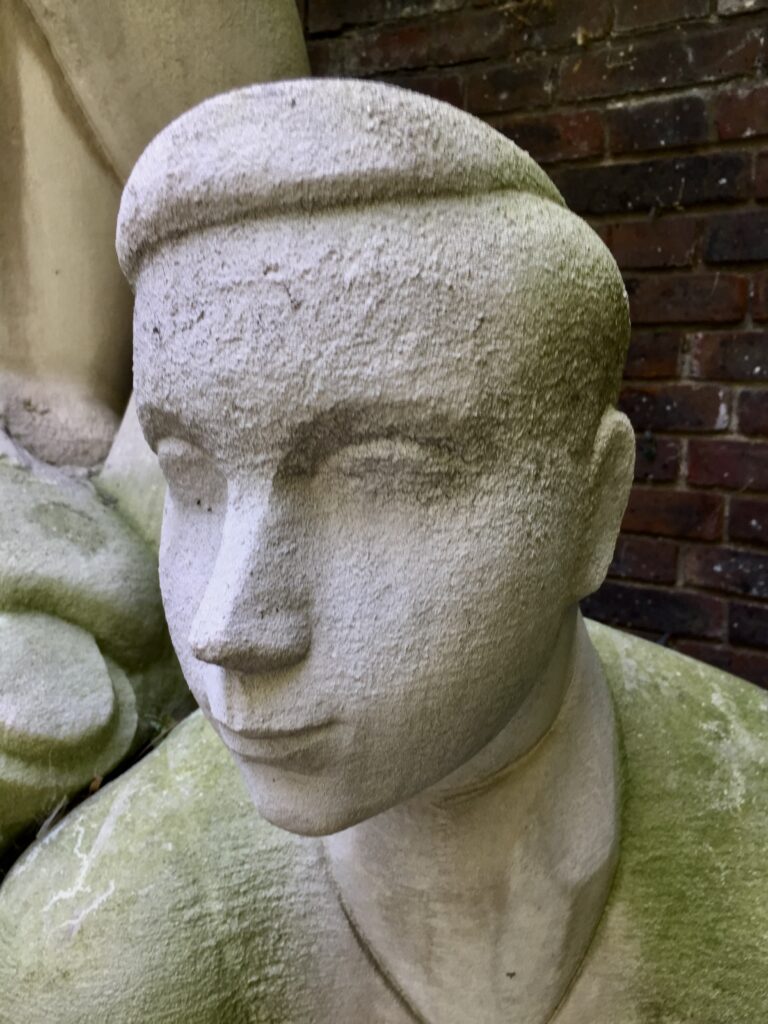
Just across the road is St Anne and St Agnes with its pretty brickwork …
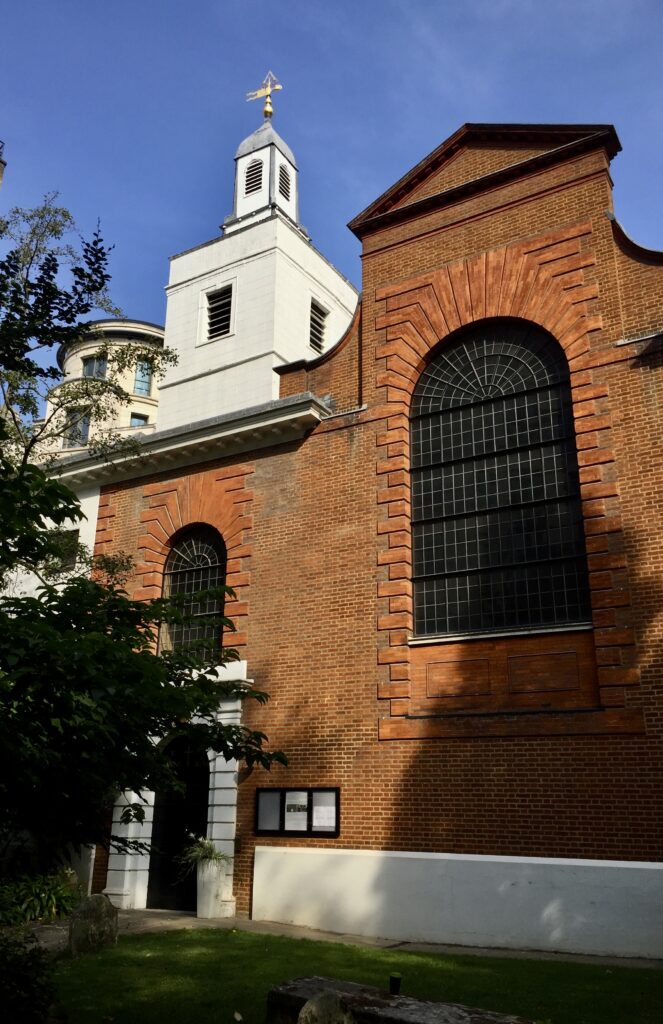
And quiet, secluded garden …
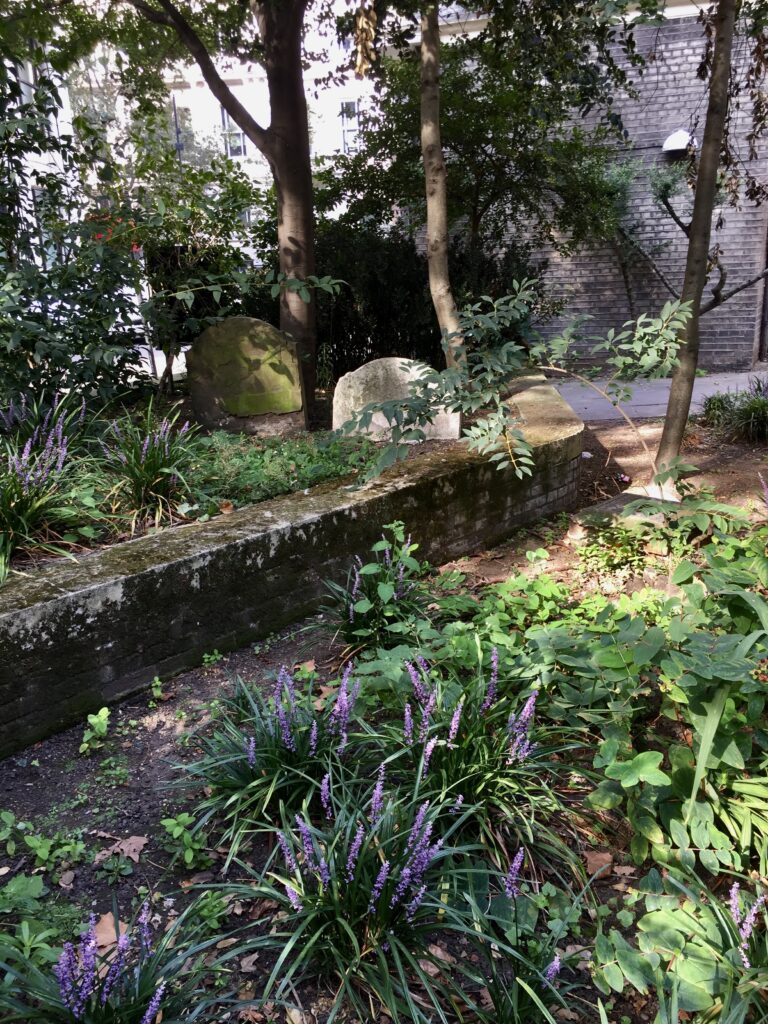
Christchurch Greyfriars Church Garden is on the site of the Franciscan Church of Greyfriars that was established in 1225. Numerous well-known people, including four queens, were buried in the old church, which was destroyed in the Great Fire of 1666. A new church, designed by Wren, was completed in 1704.
In 1940 incendiary bombs destroyed the body of the Wren church, and only the west tower now stands. In 1989 a rose garden was established that reflects the floor plan of the original church with box-edged beds representing the original position of the pews with wooden towers representing the stone columns of the former church …
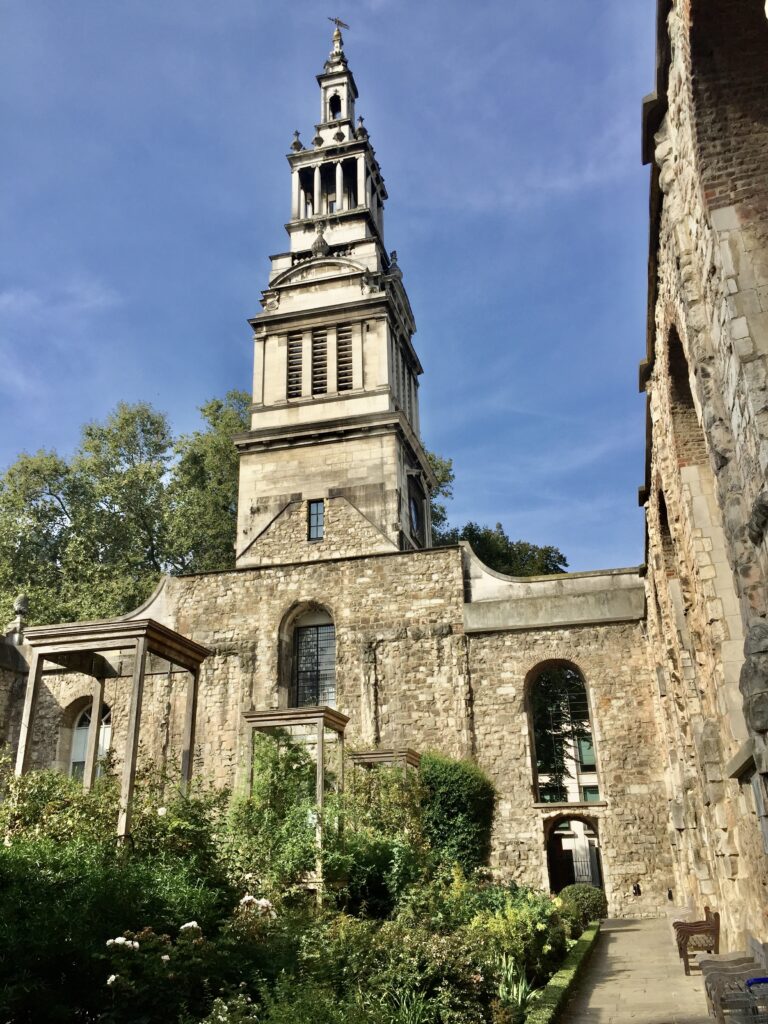
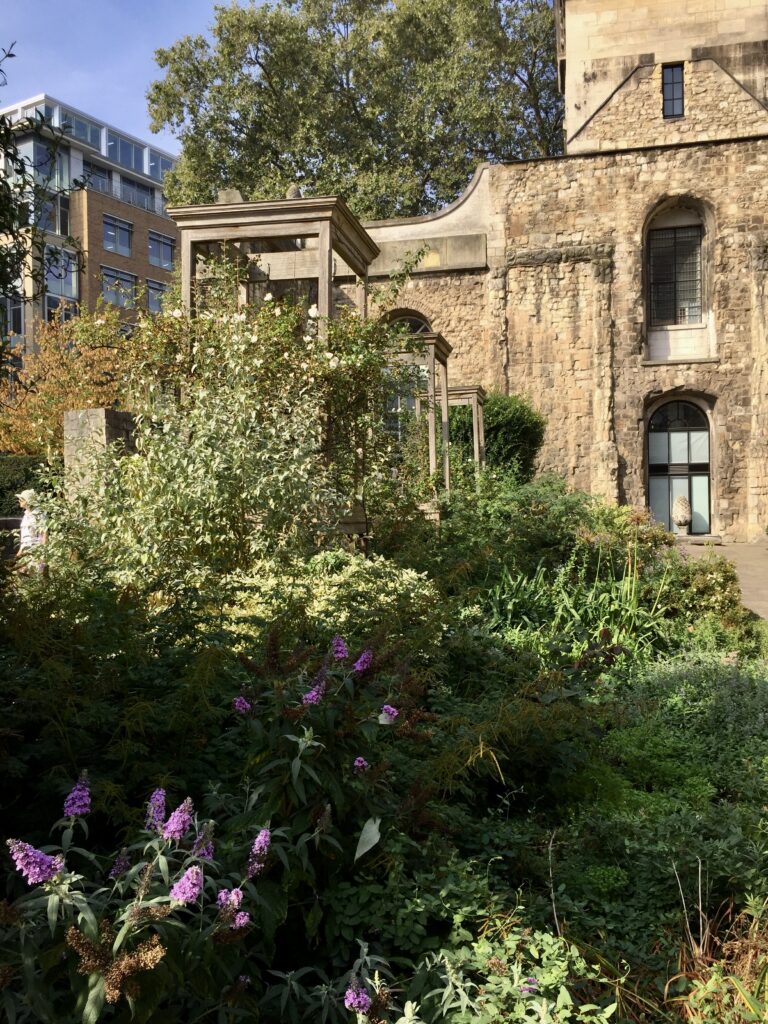
These blocks of granite are relatively new additions to the site …
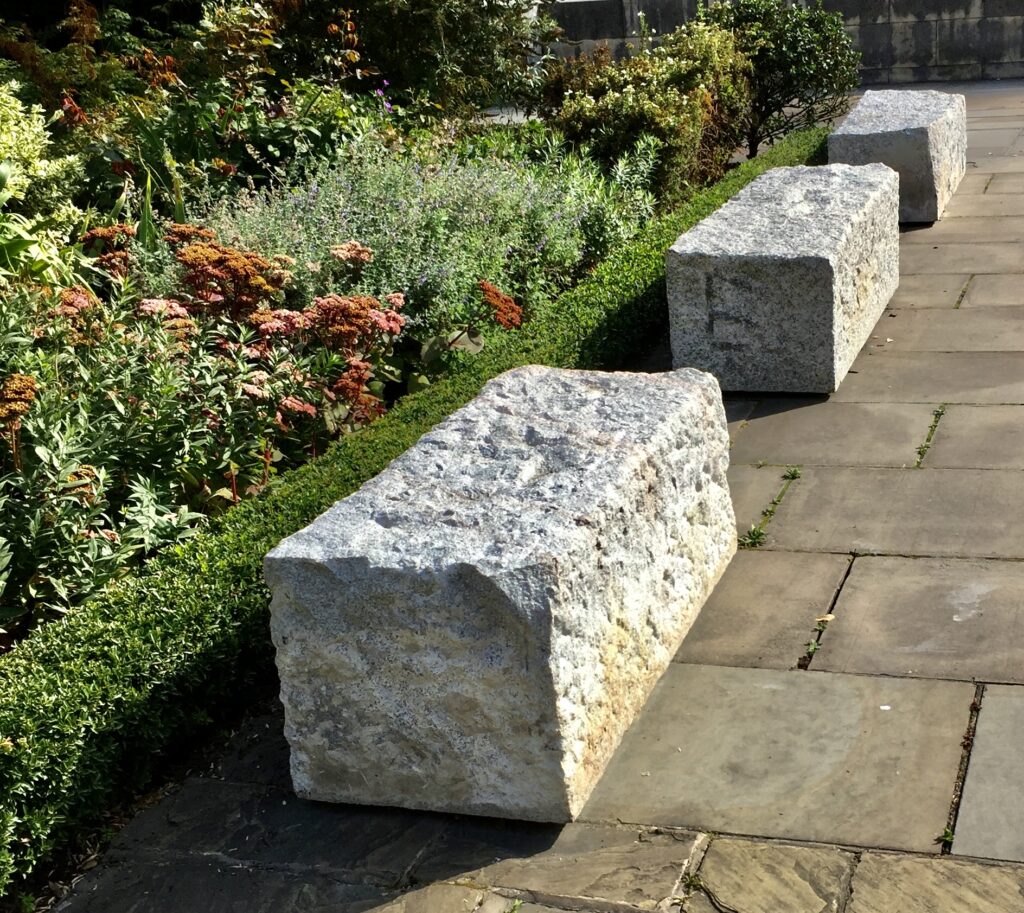
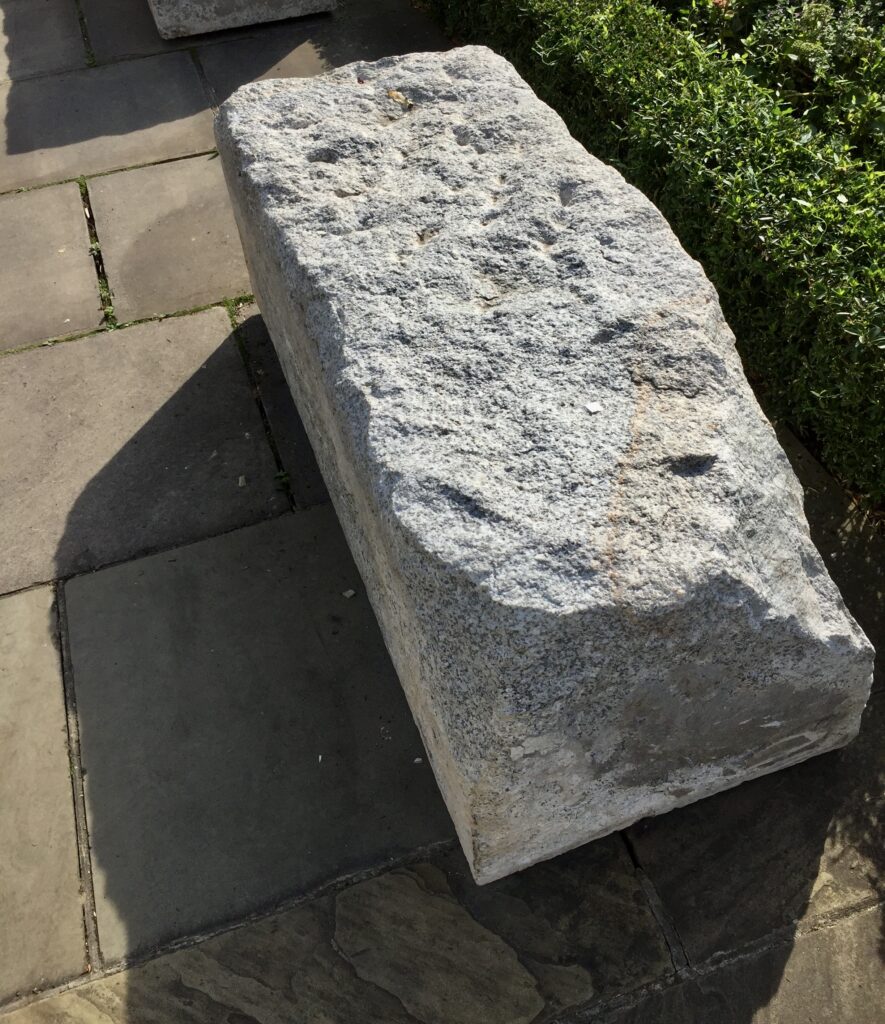
Information about them …
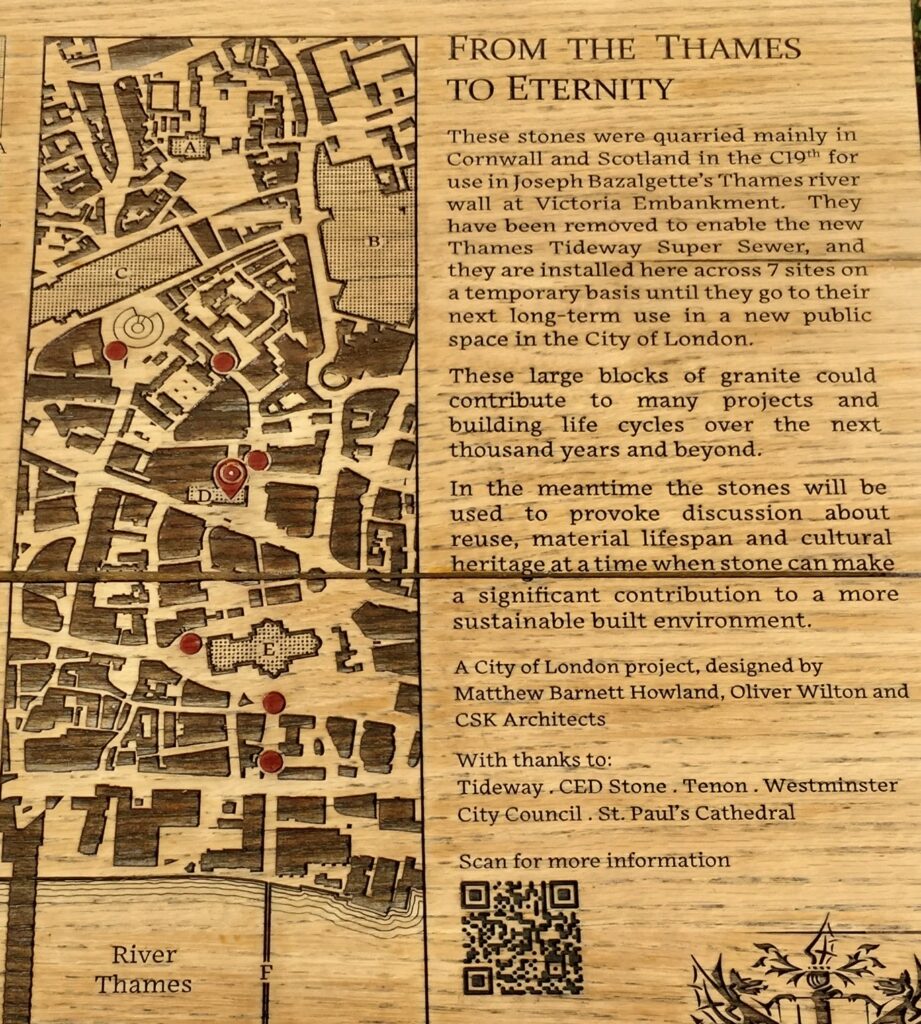
The nearby sculpture celebrates the Greryfriars School’s success in educating youngsters from a deprived background and turning them into model citizens …
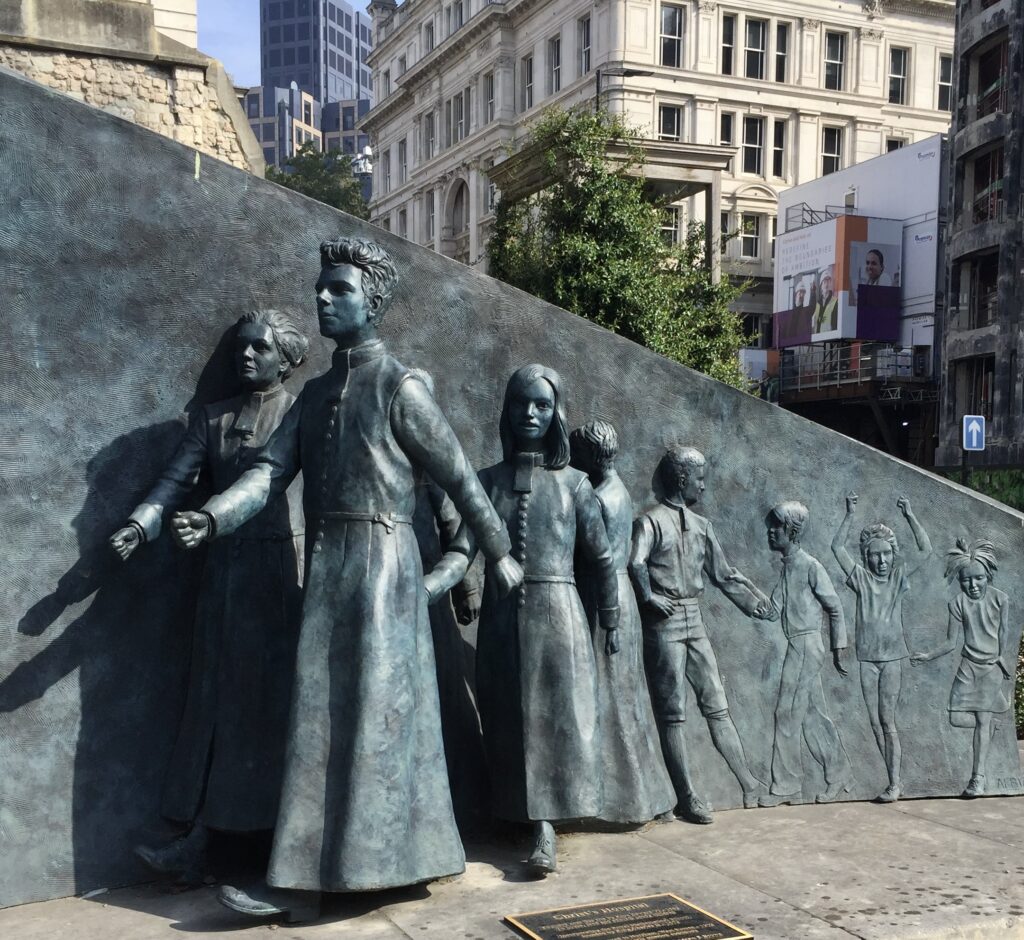
Actually, I think the street ragamuffins on the right seem to be having a great time …
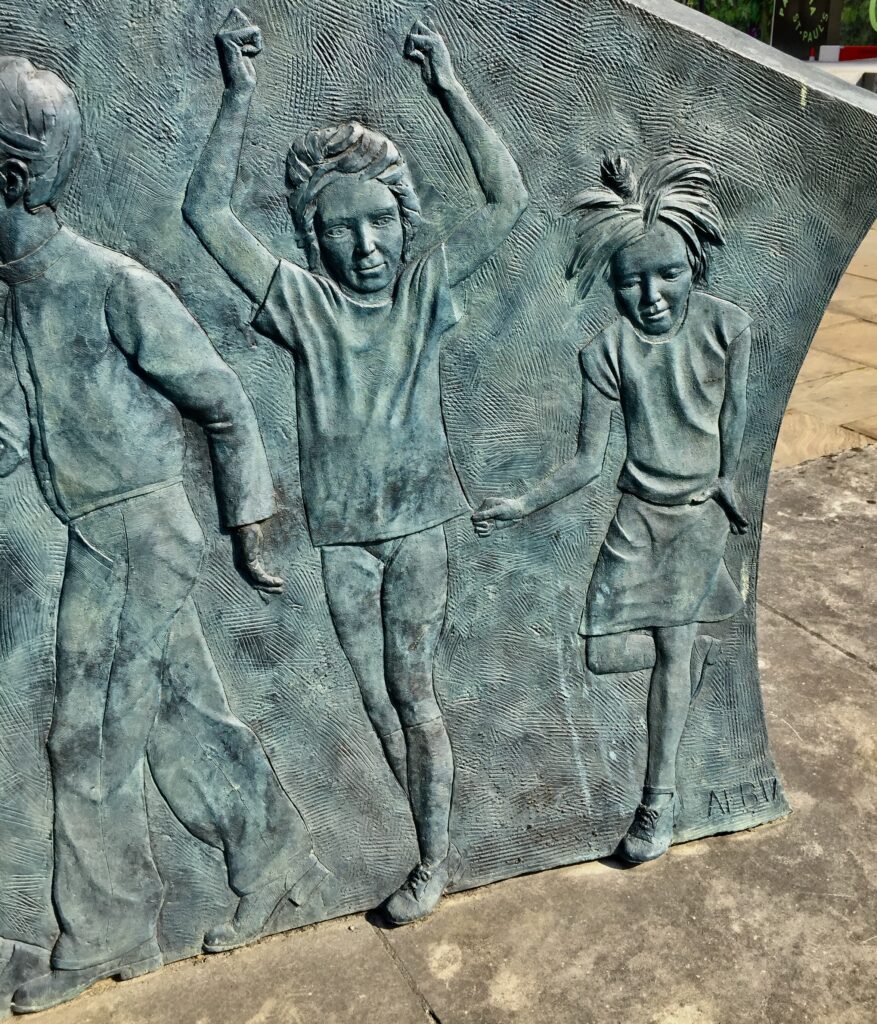
St Paul’s Cathedral churchyard …
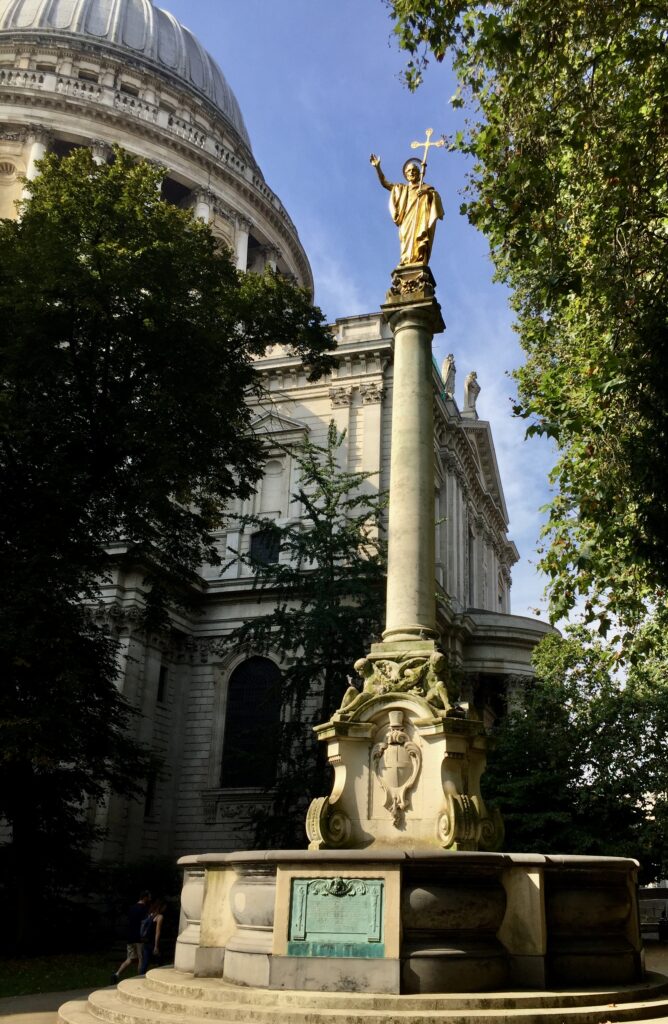
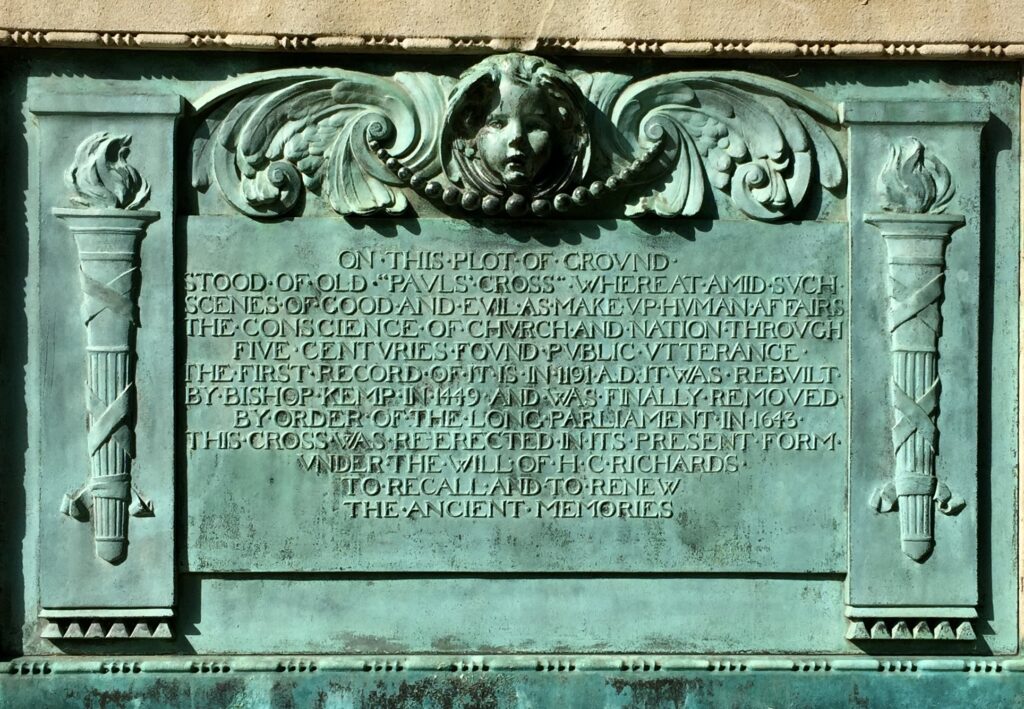
St Thomas à Becket lies in agony …
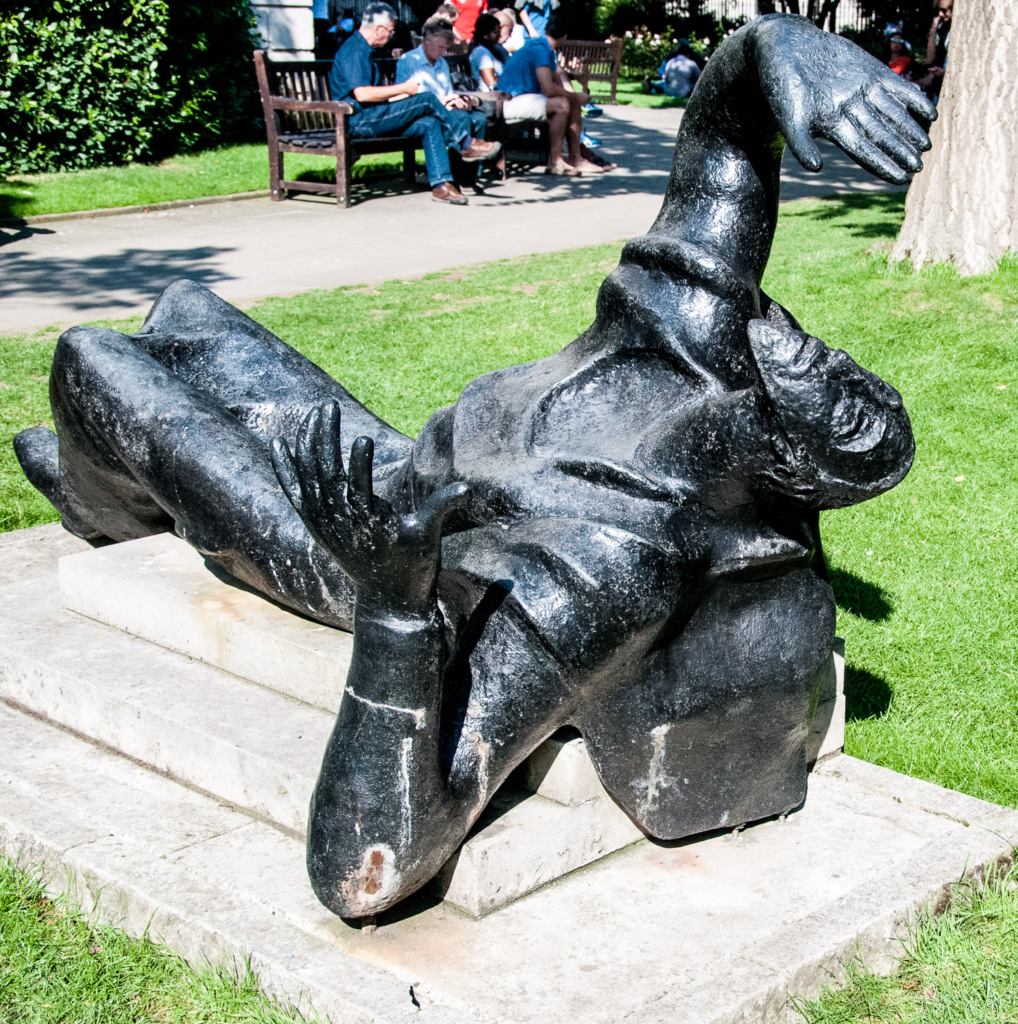
And some great news, the little pond outside St Lawrence Jewry has been renovated …
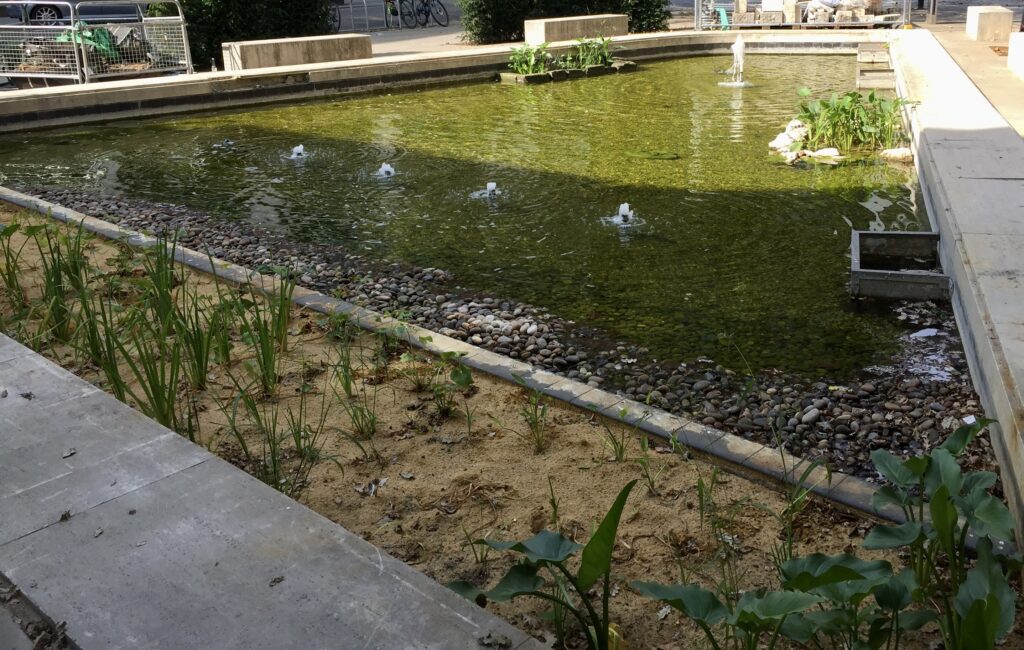
I hope they put in some fish.
And finally, near St Paul’s, is this the most expensive barber in London?
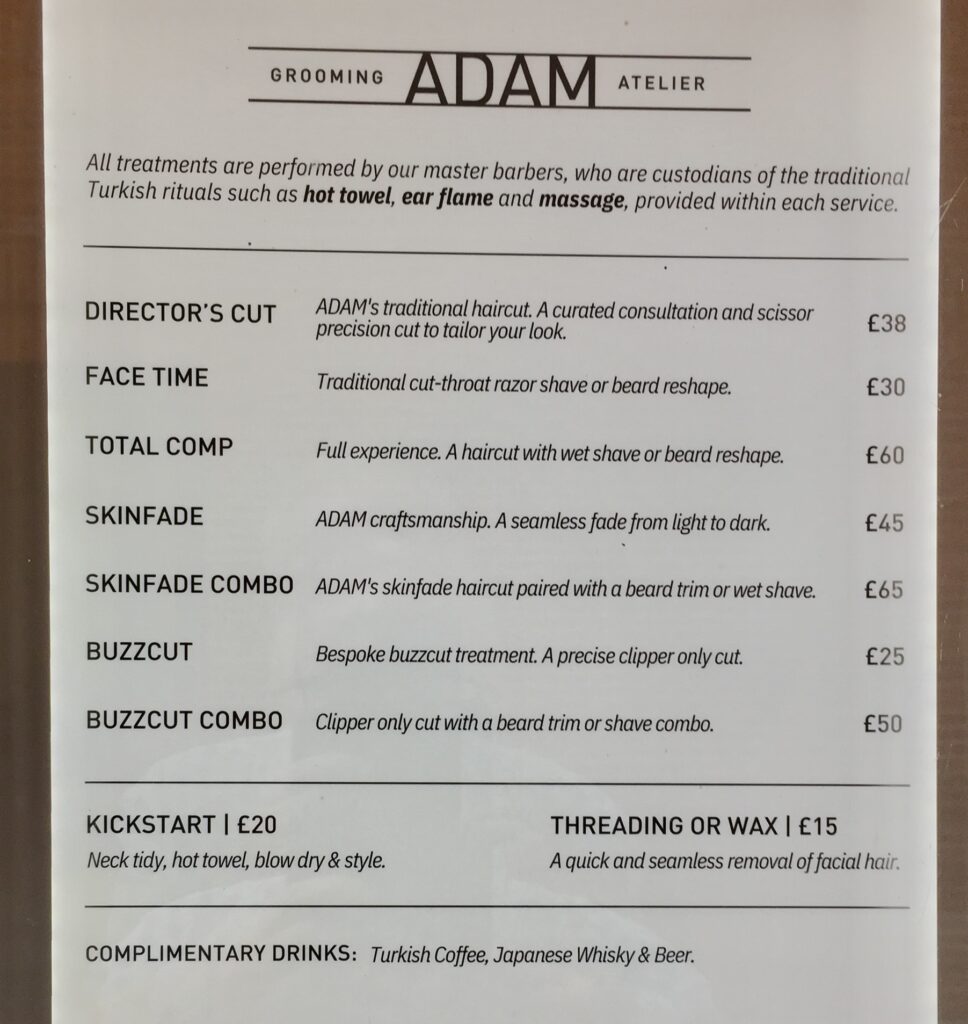
Mind you, there is complimentary Japanese Whisky and Beer!
If you would like to follow me on Instagram here is the link …

